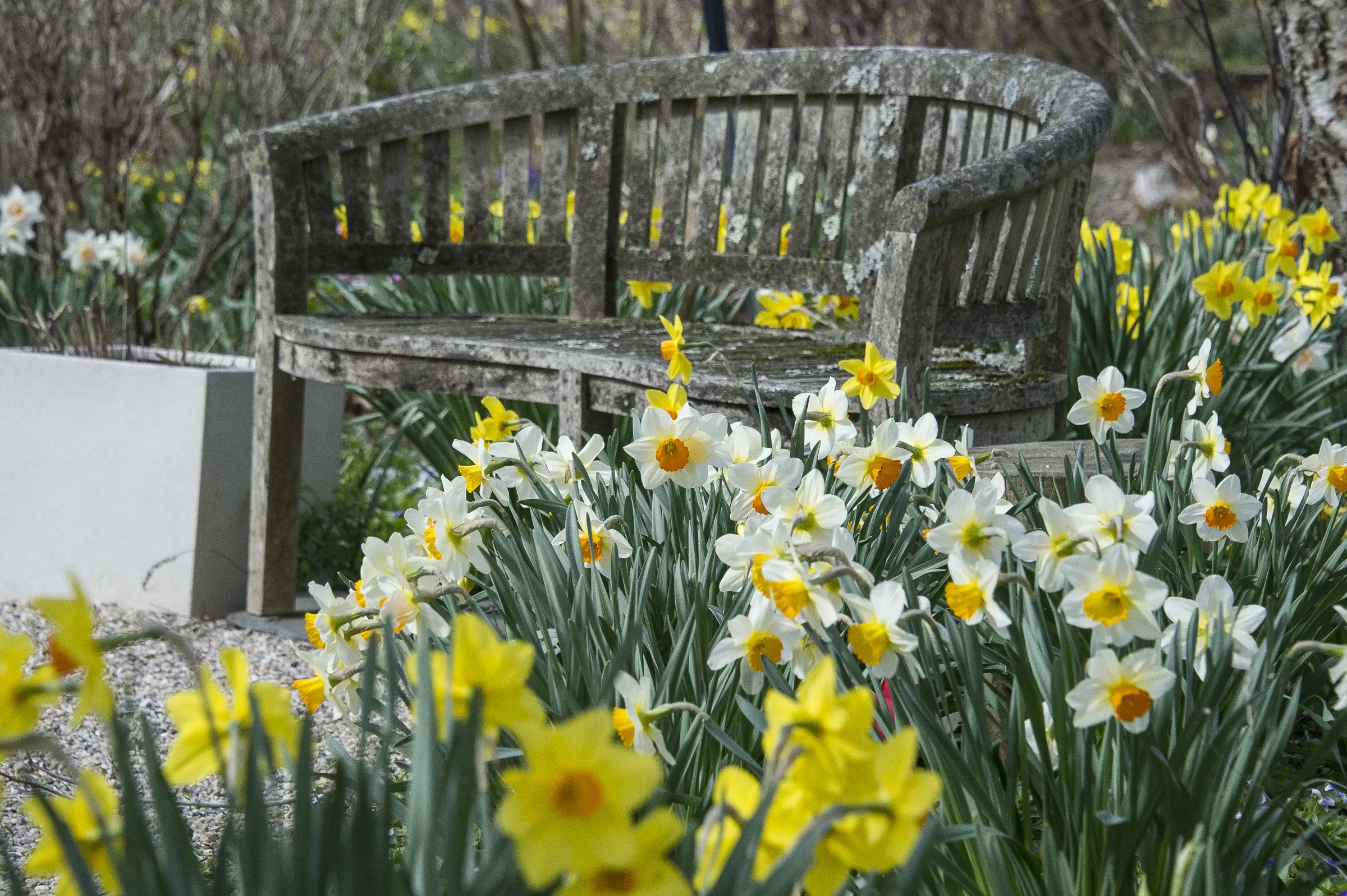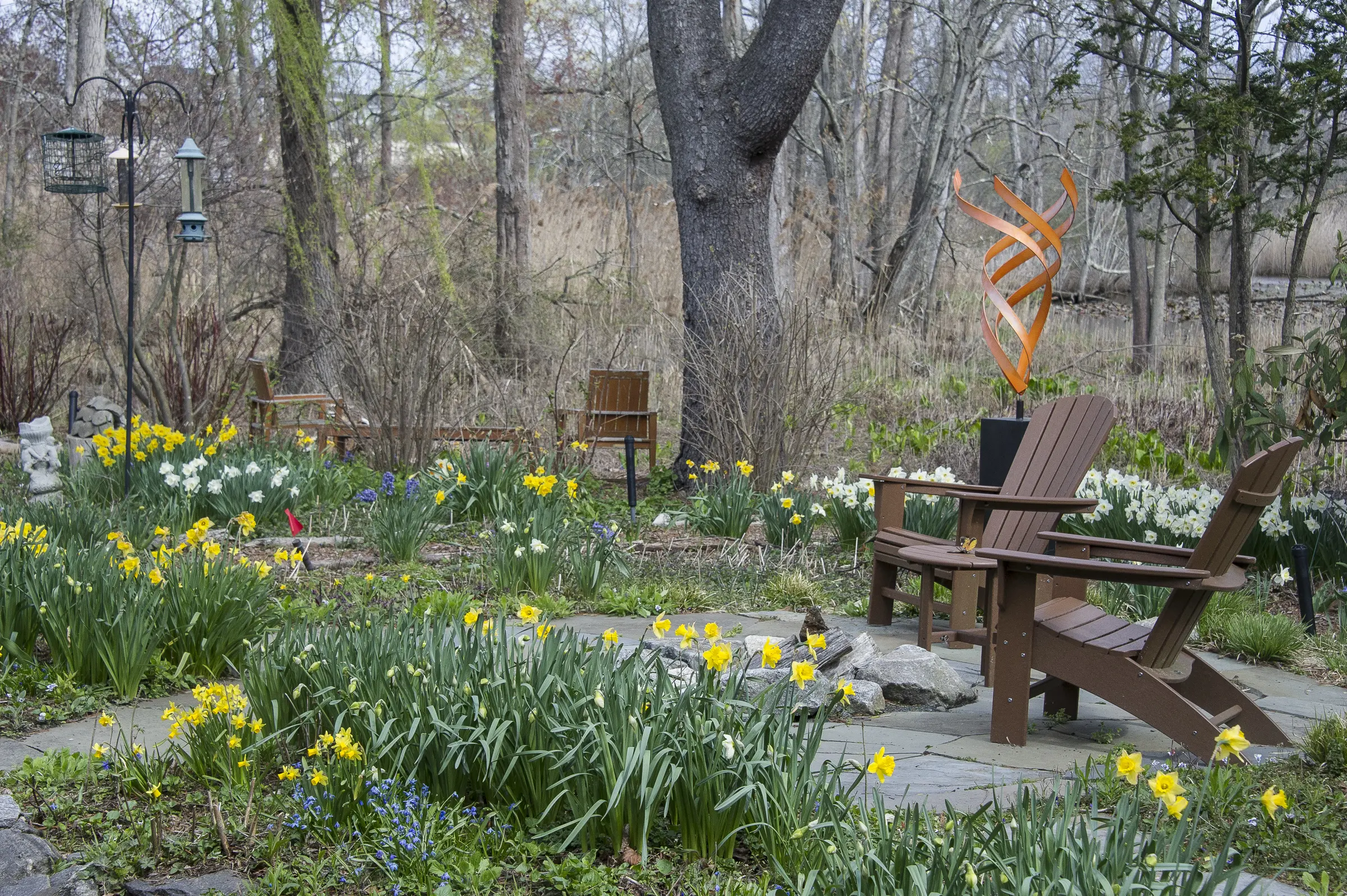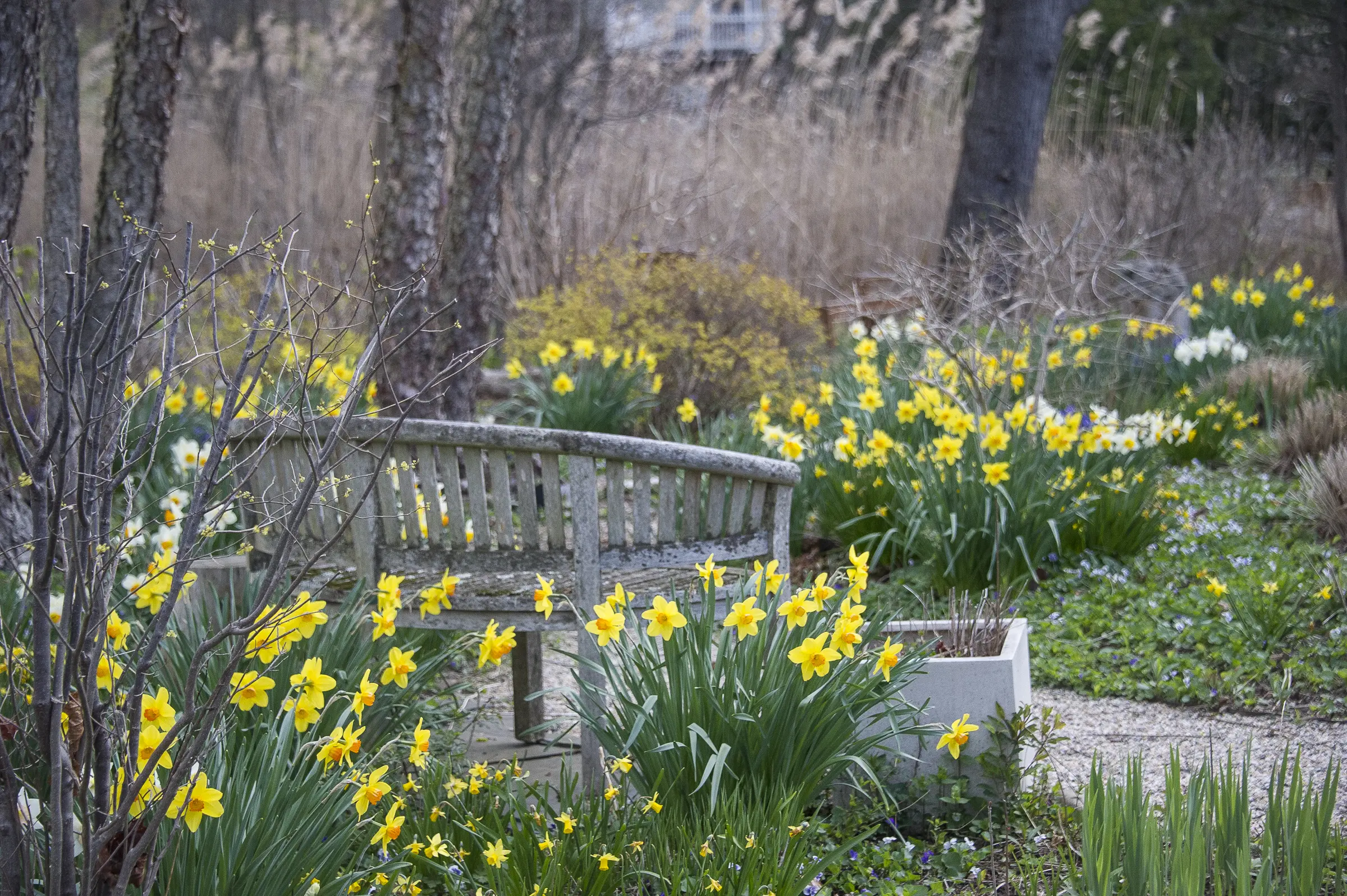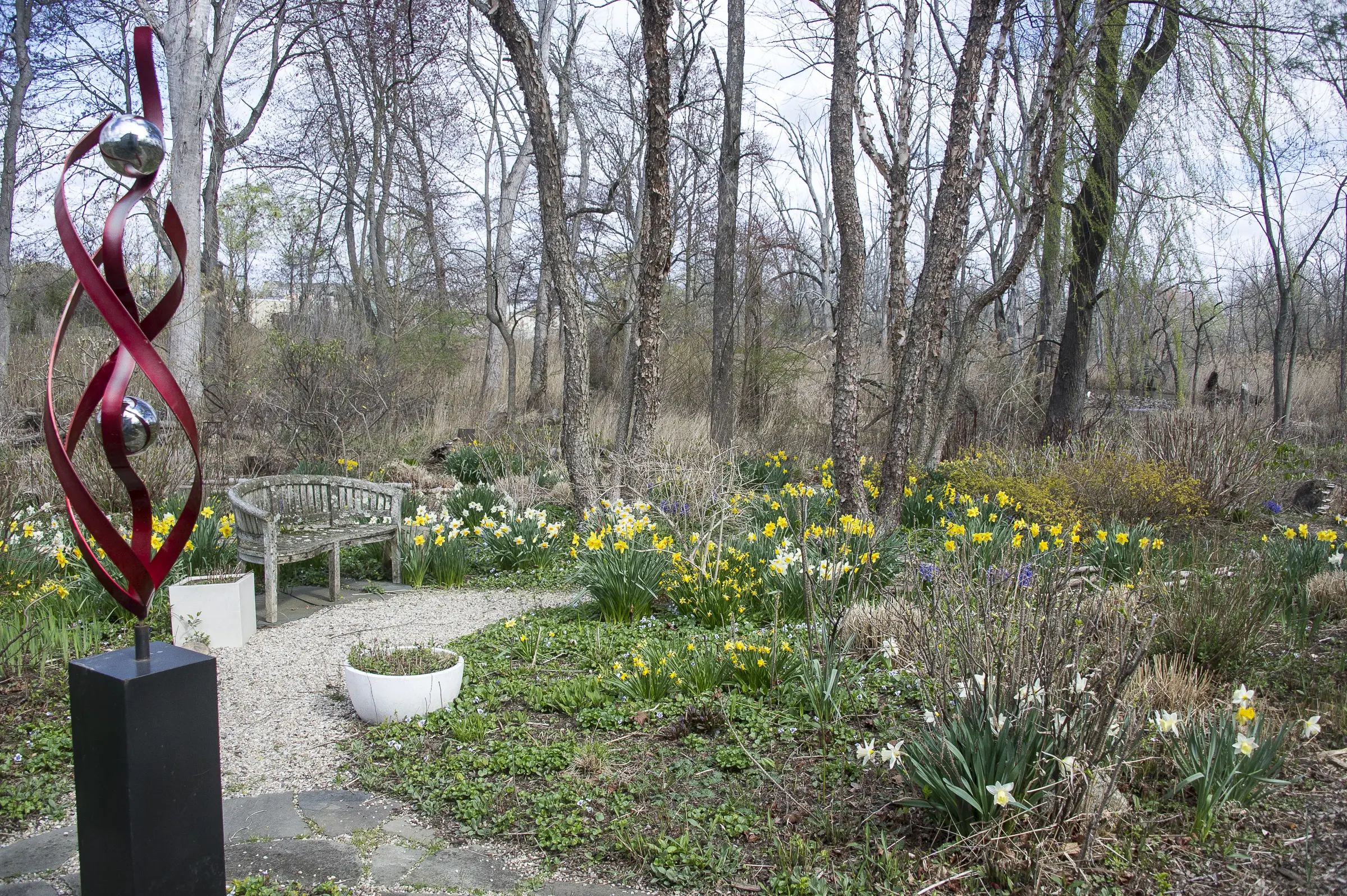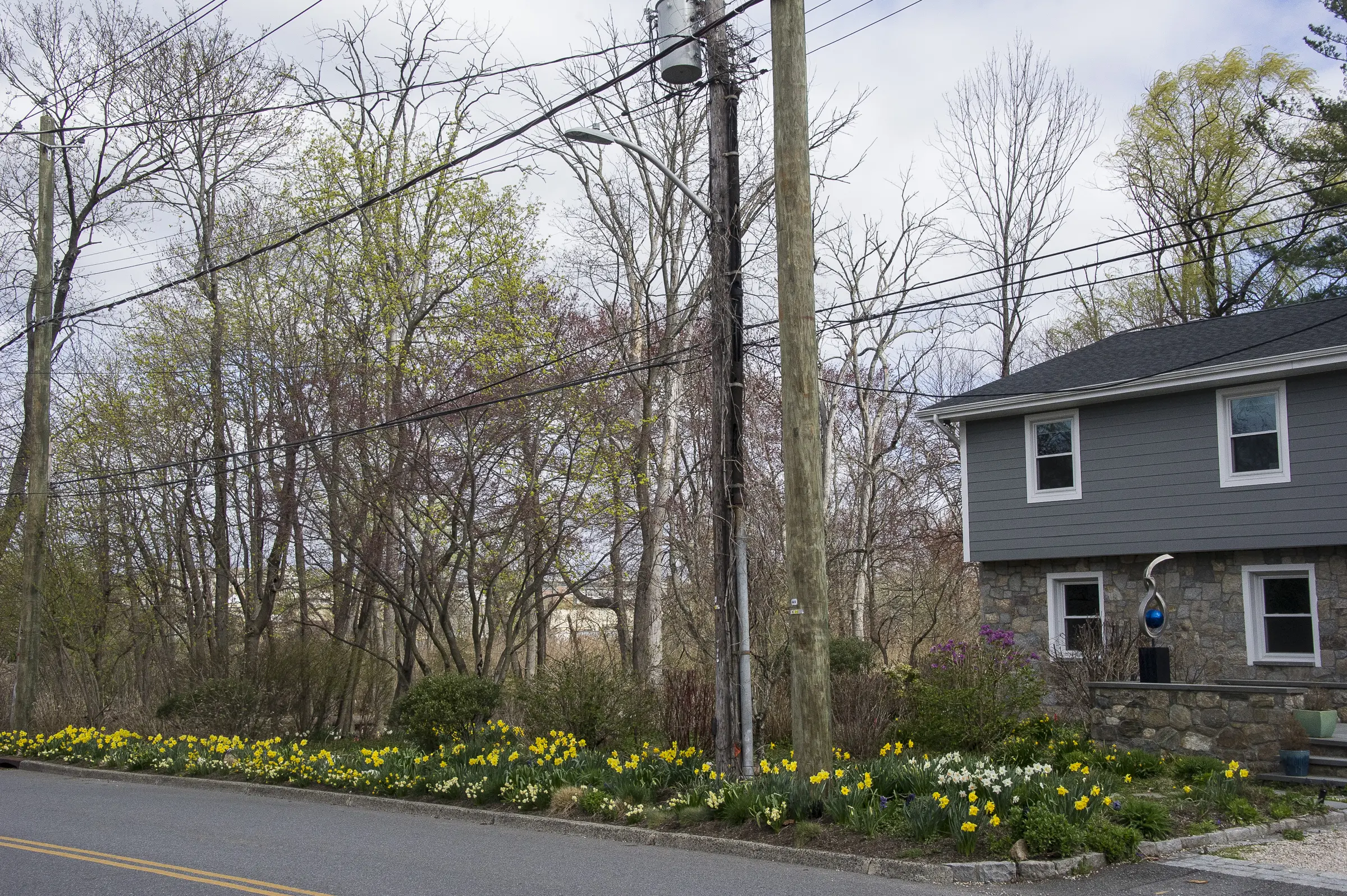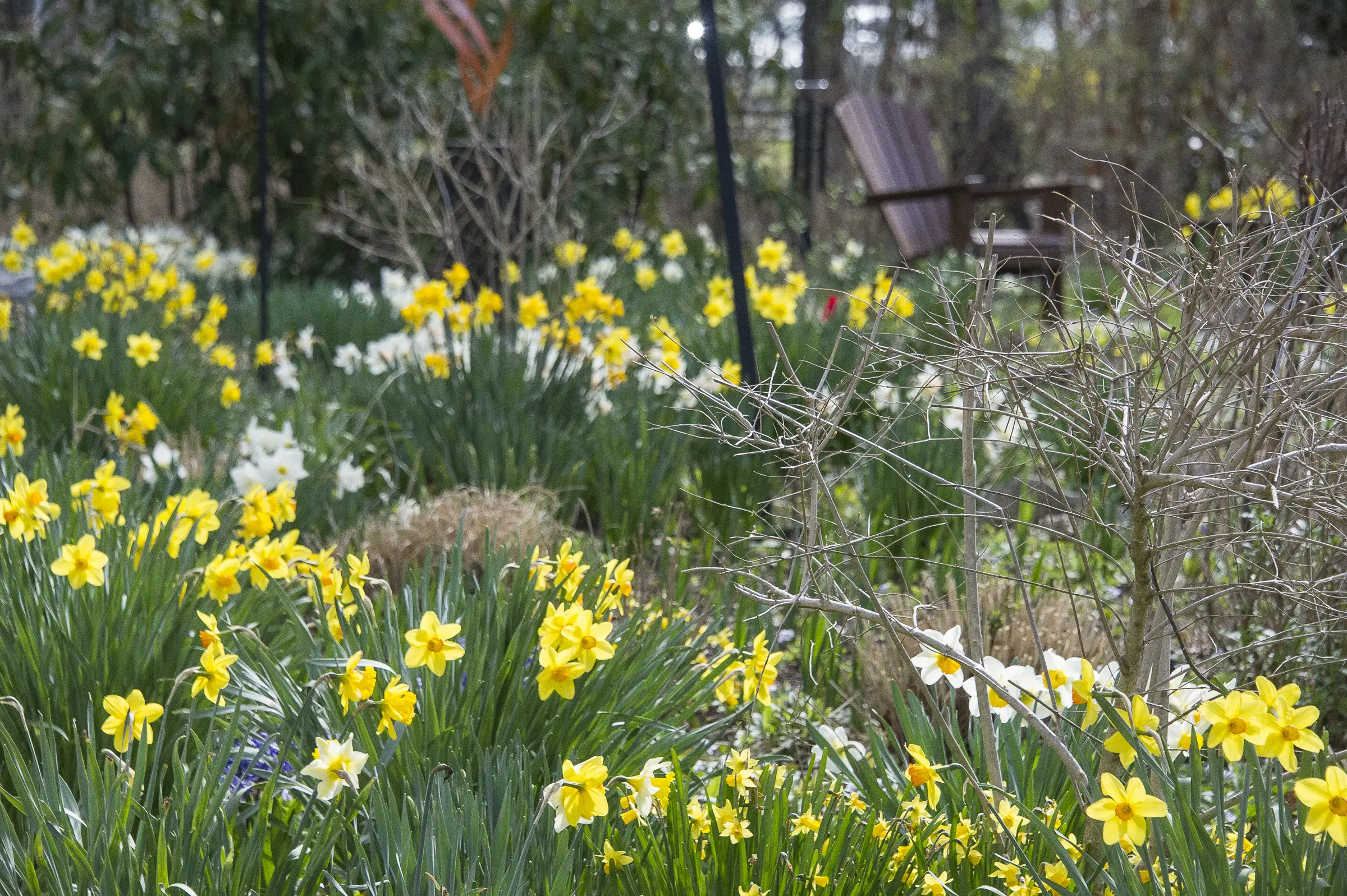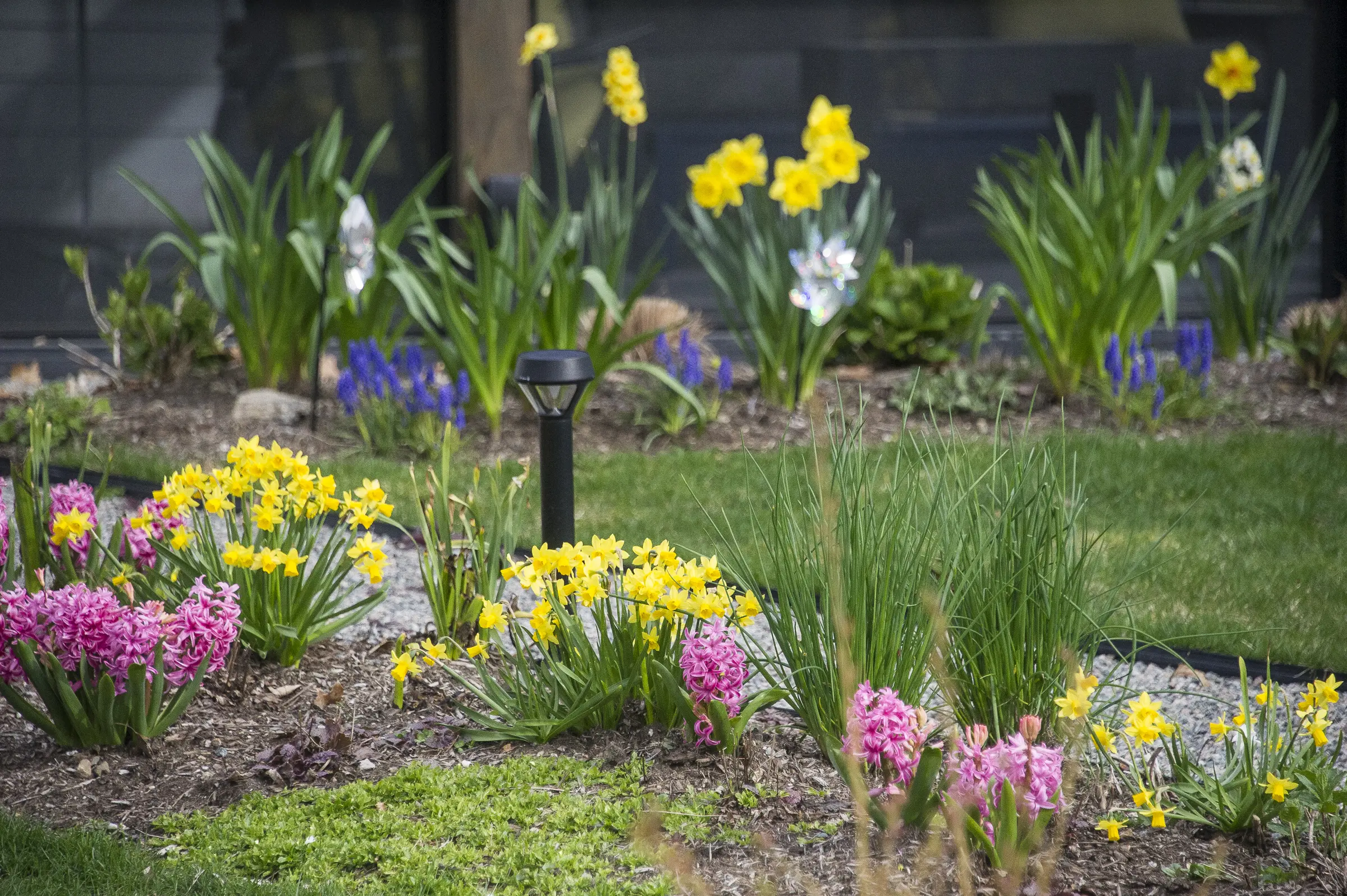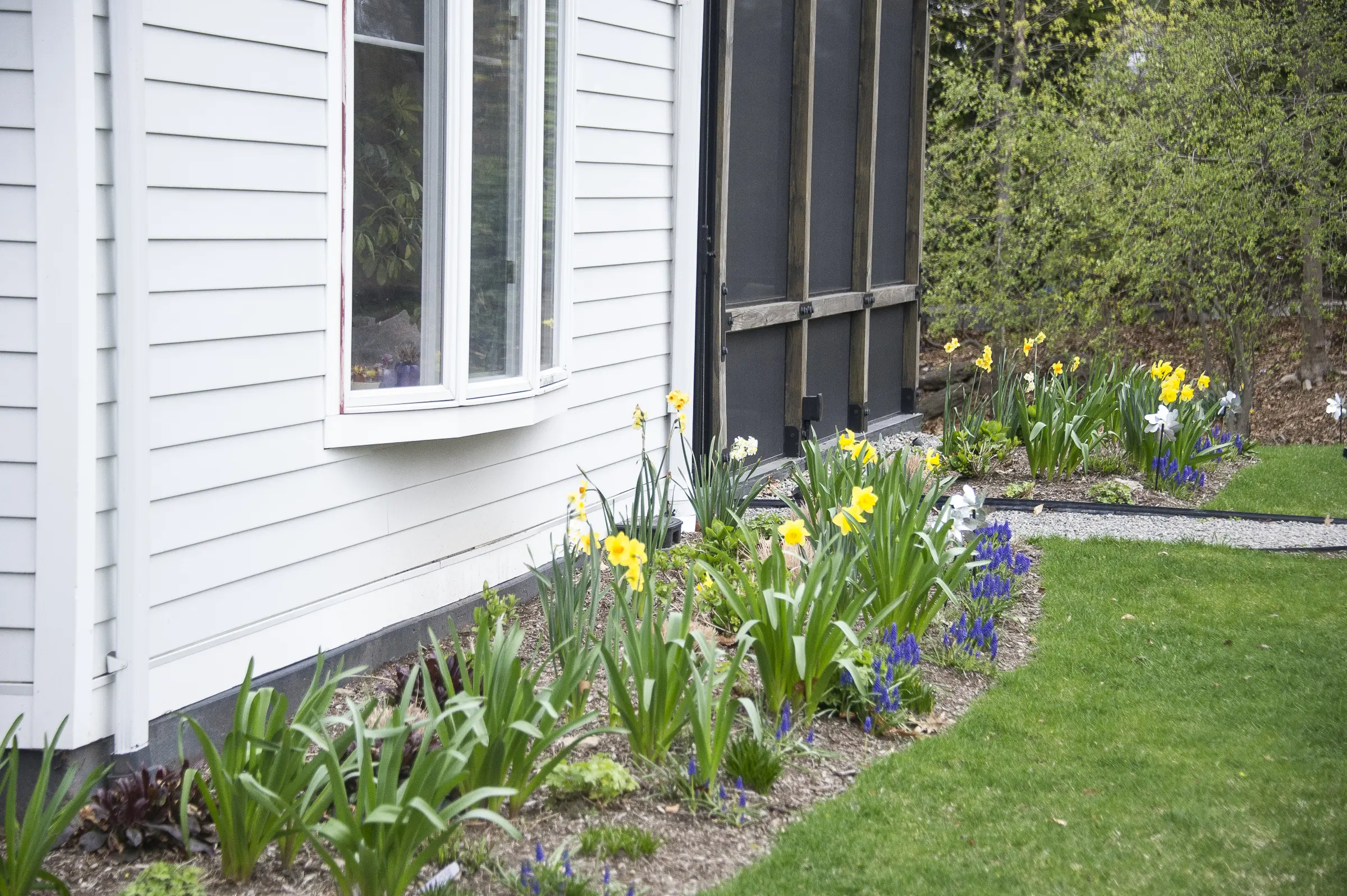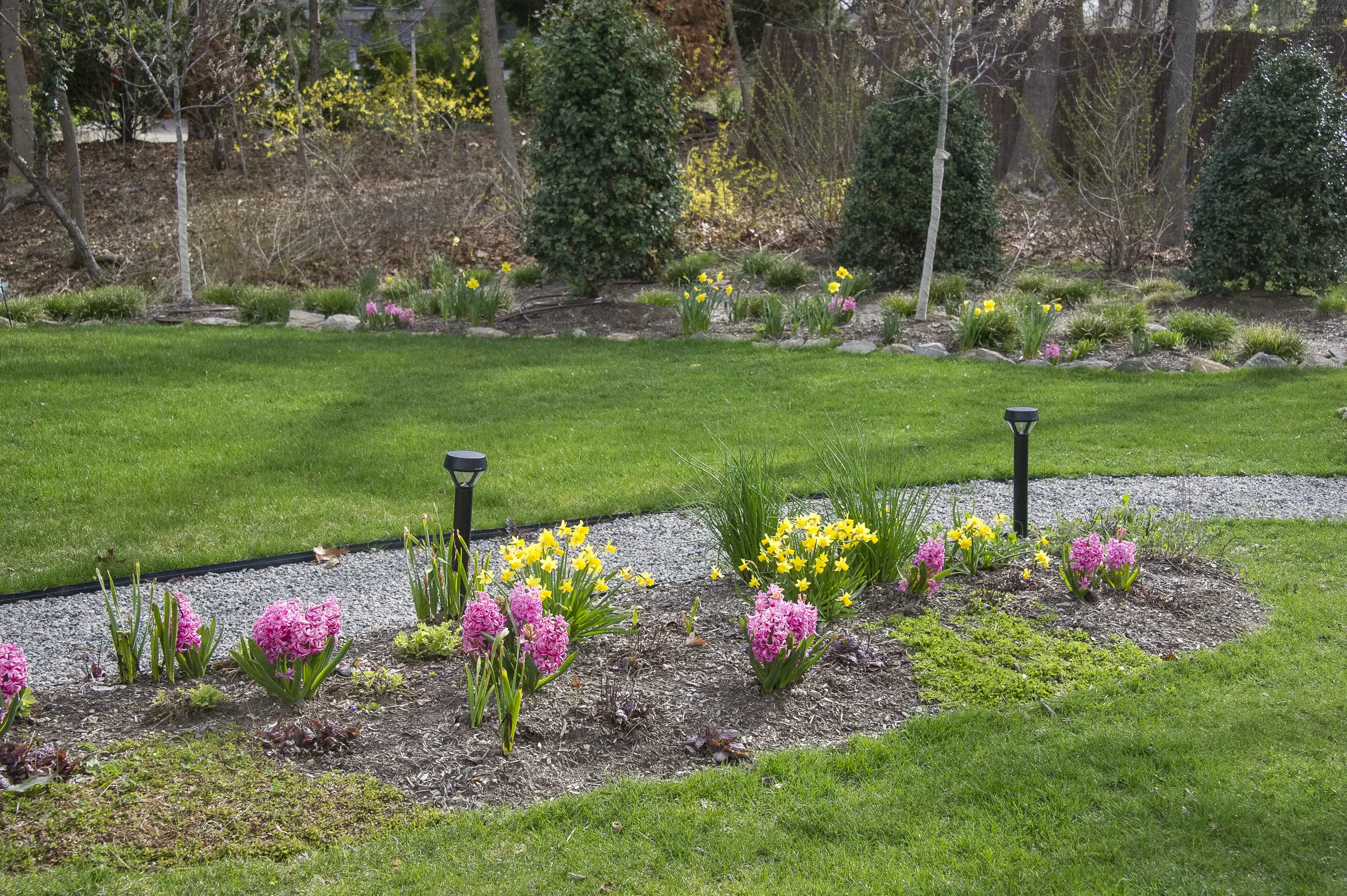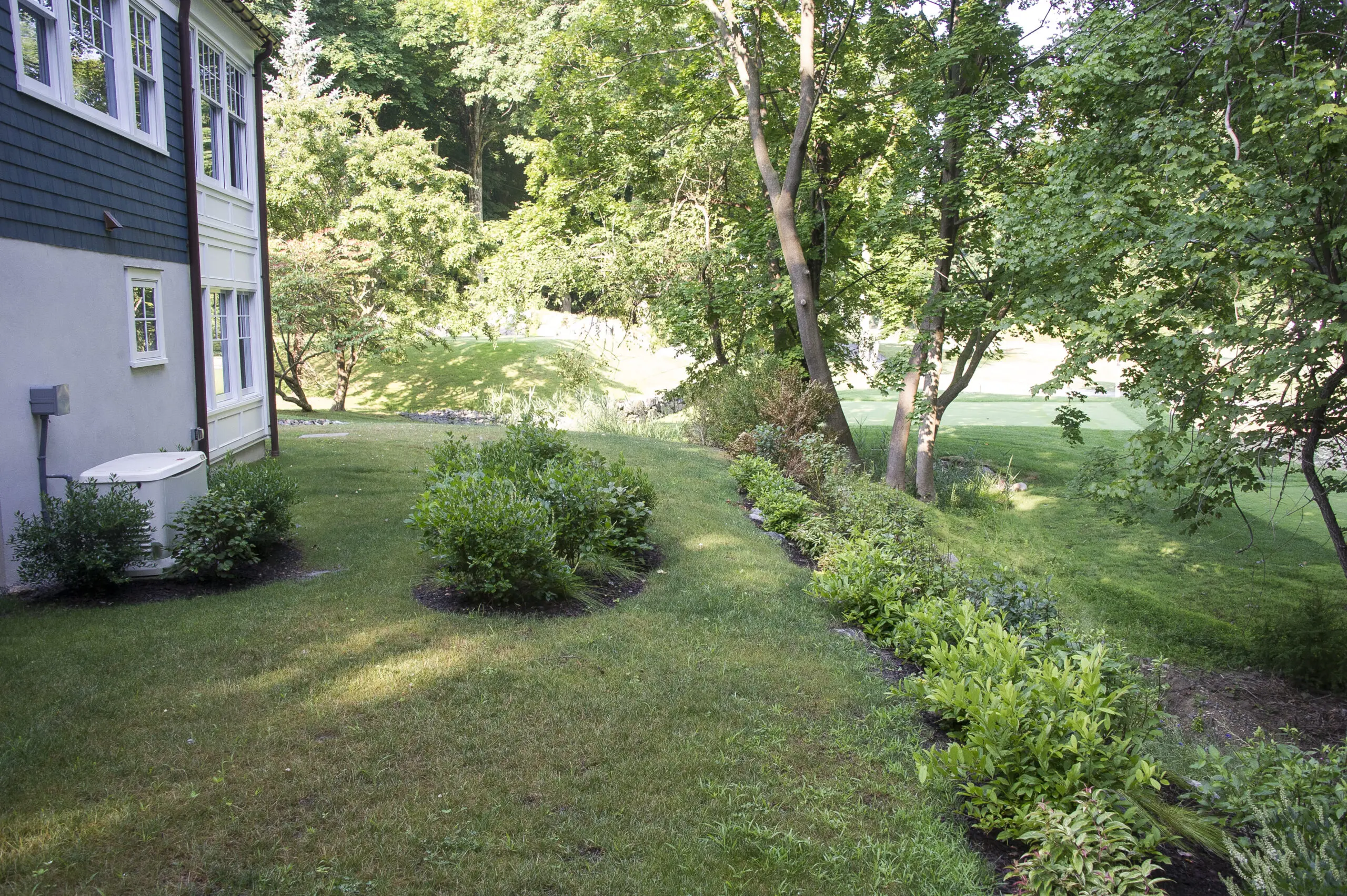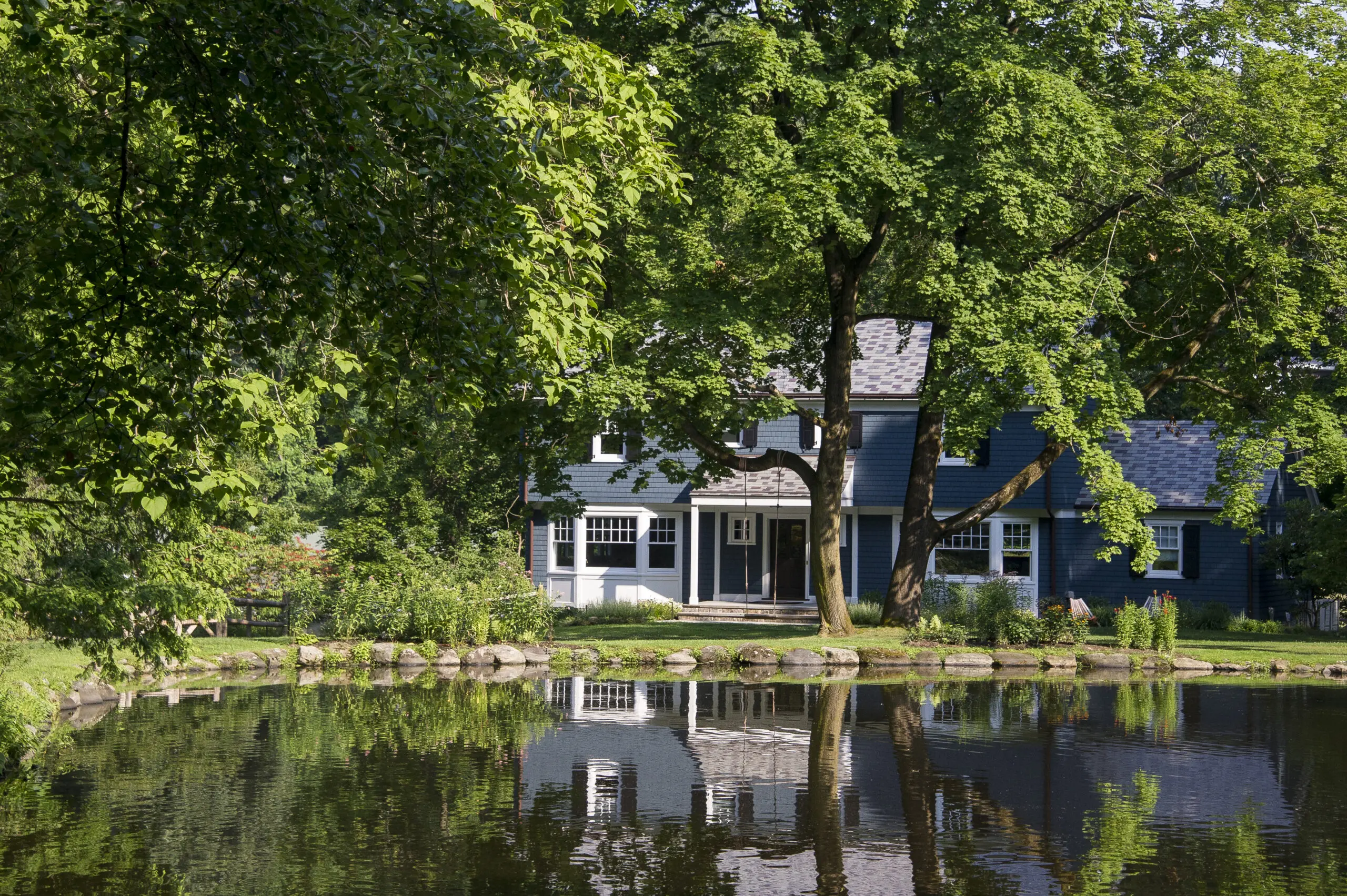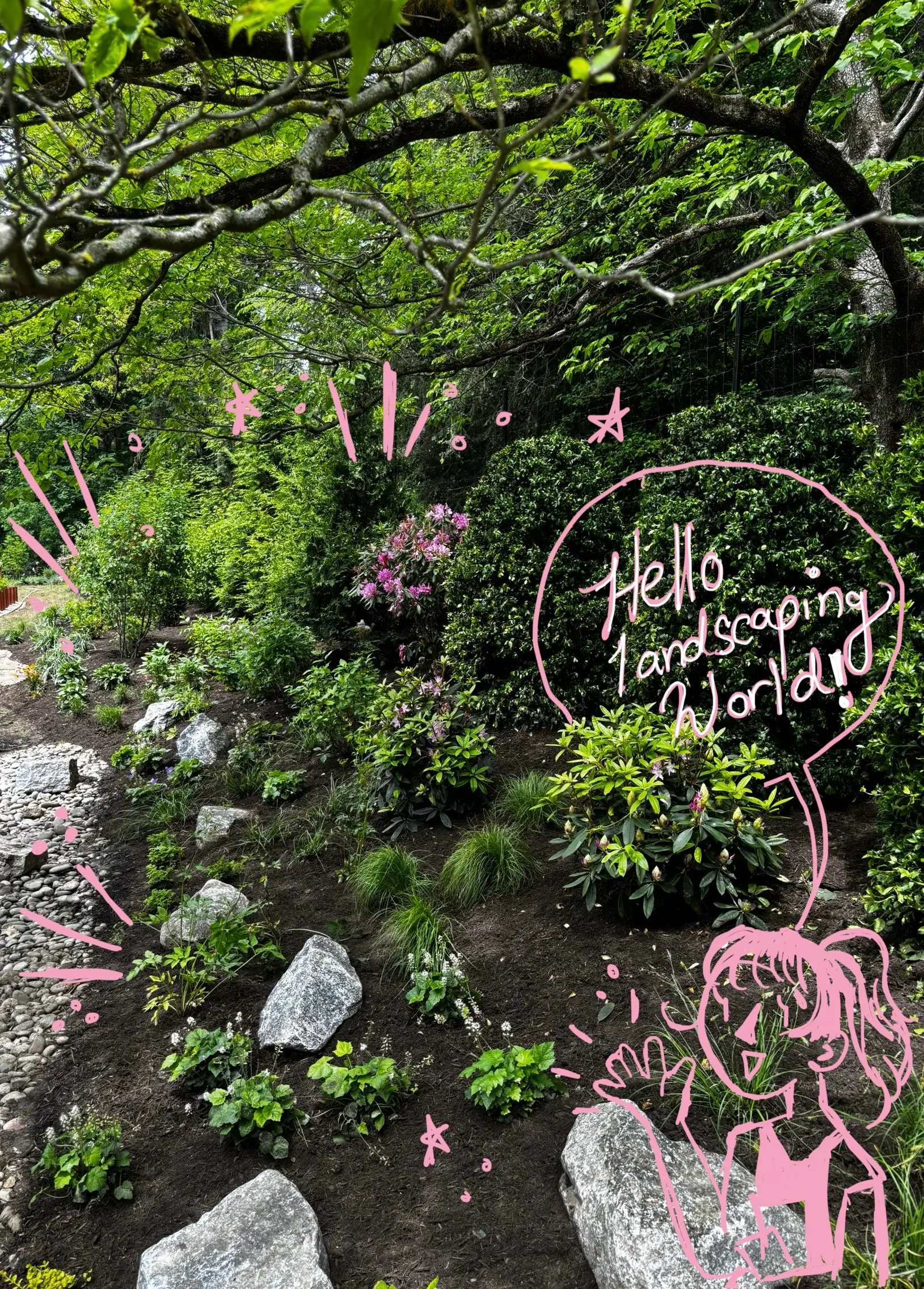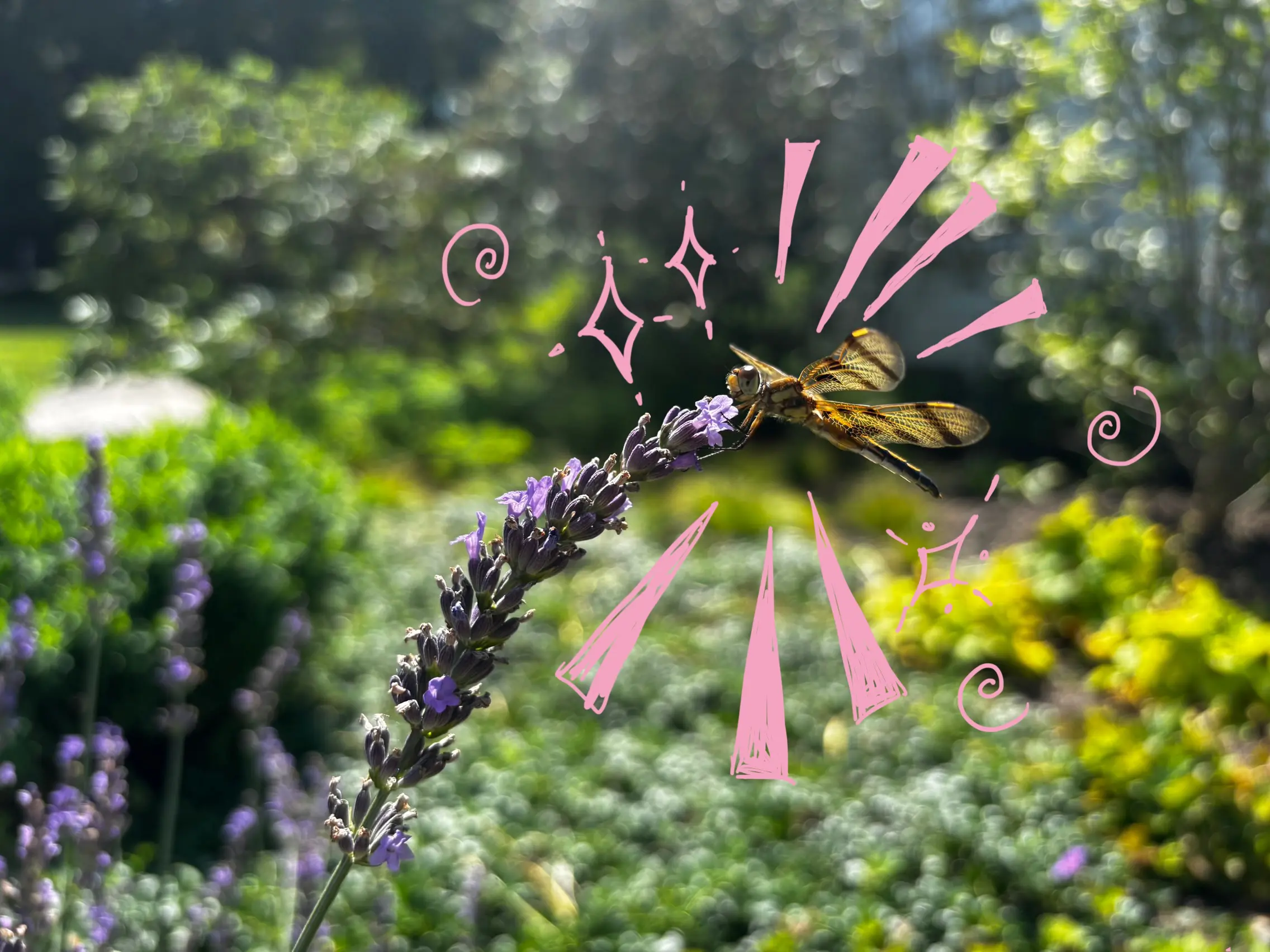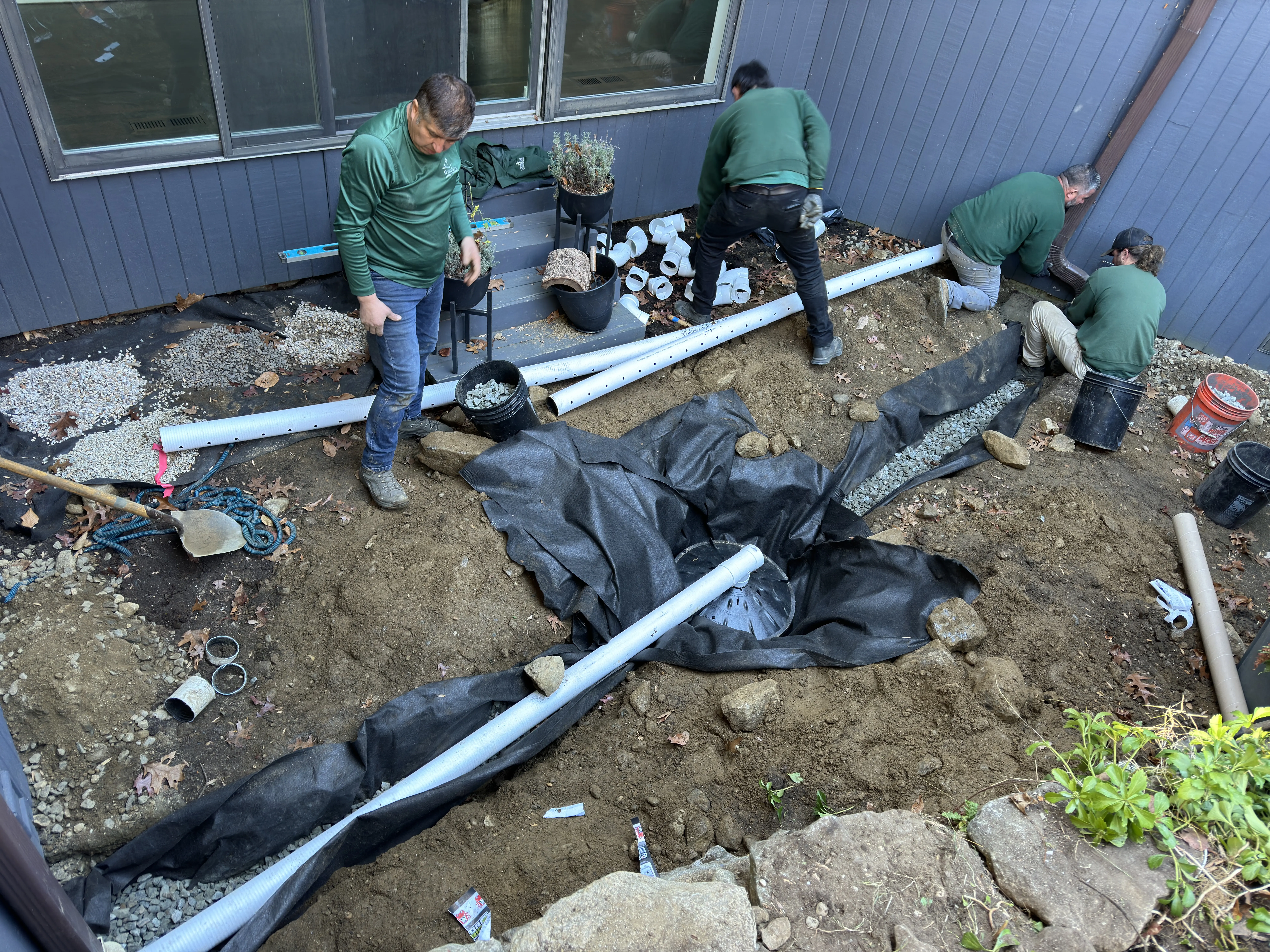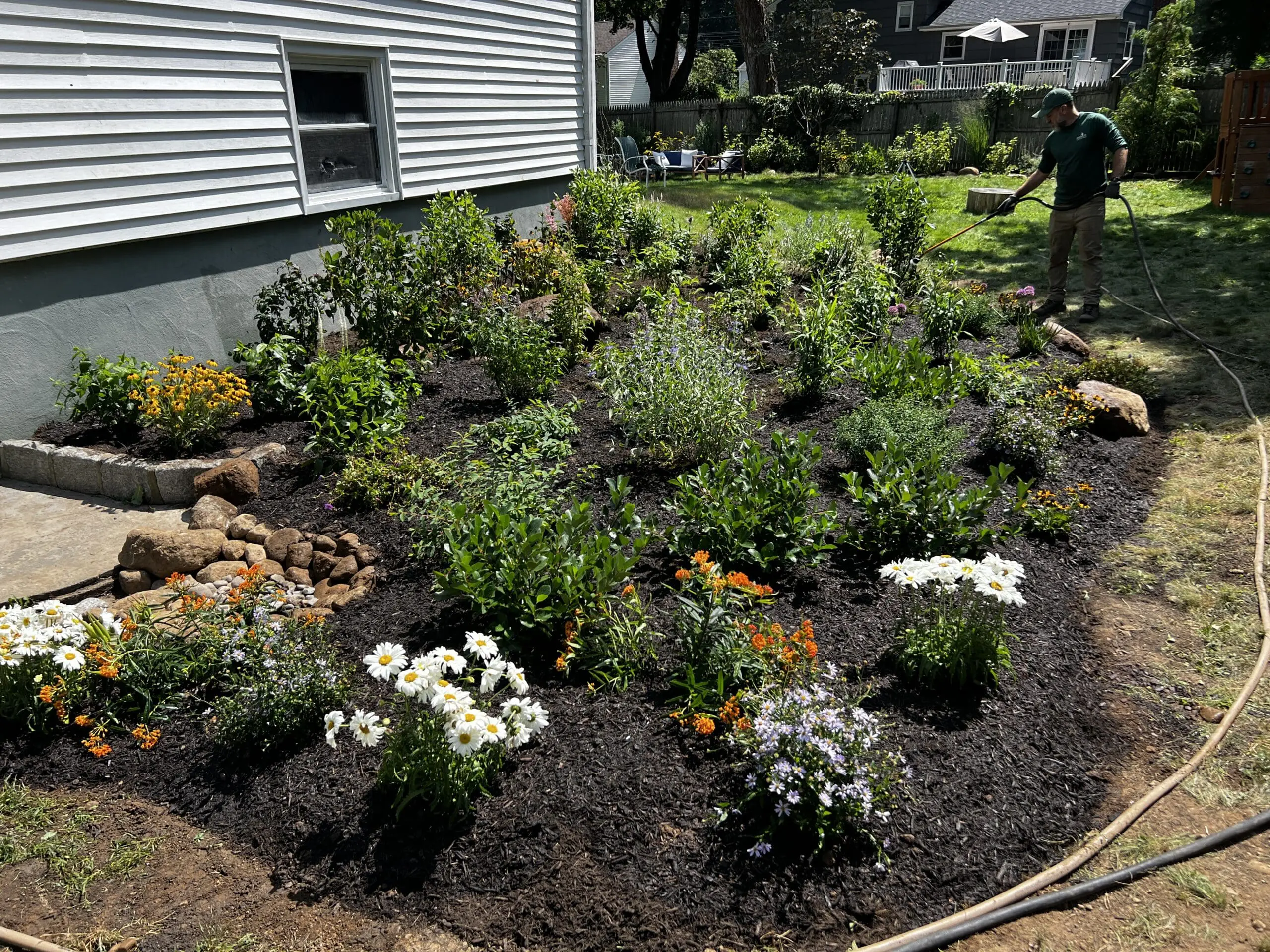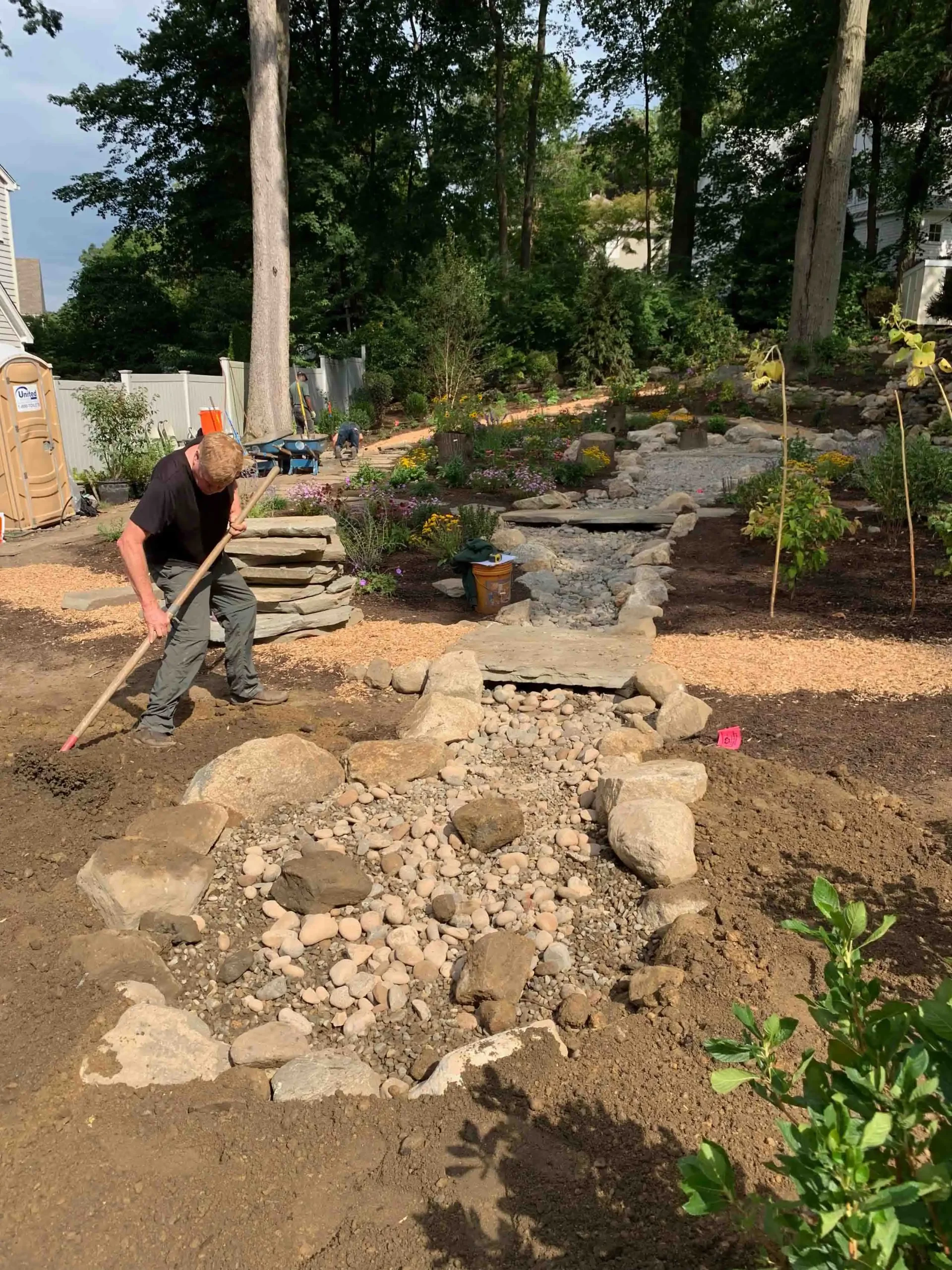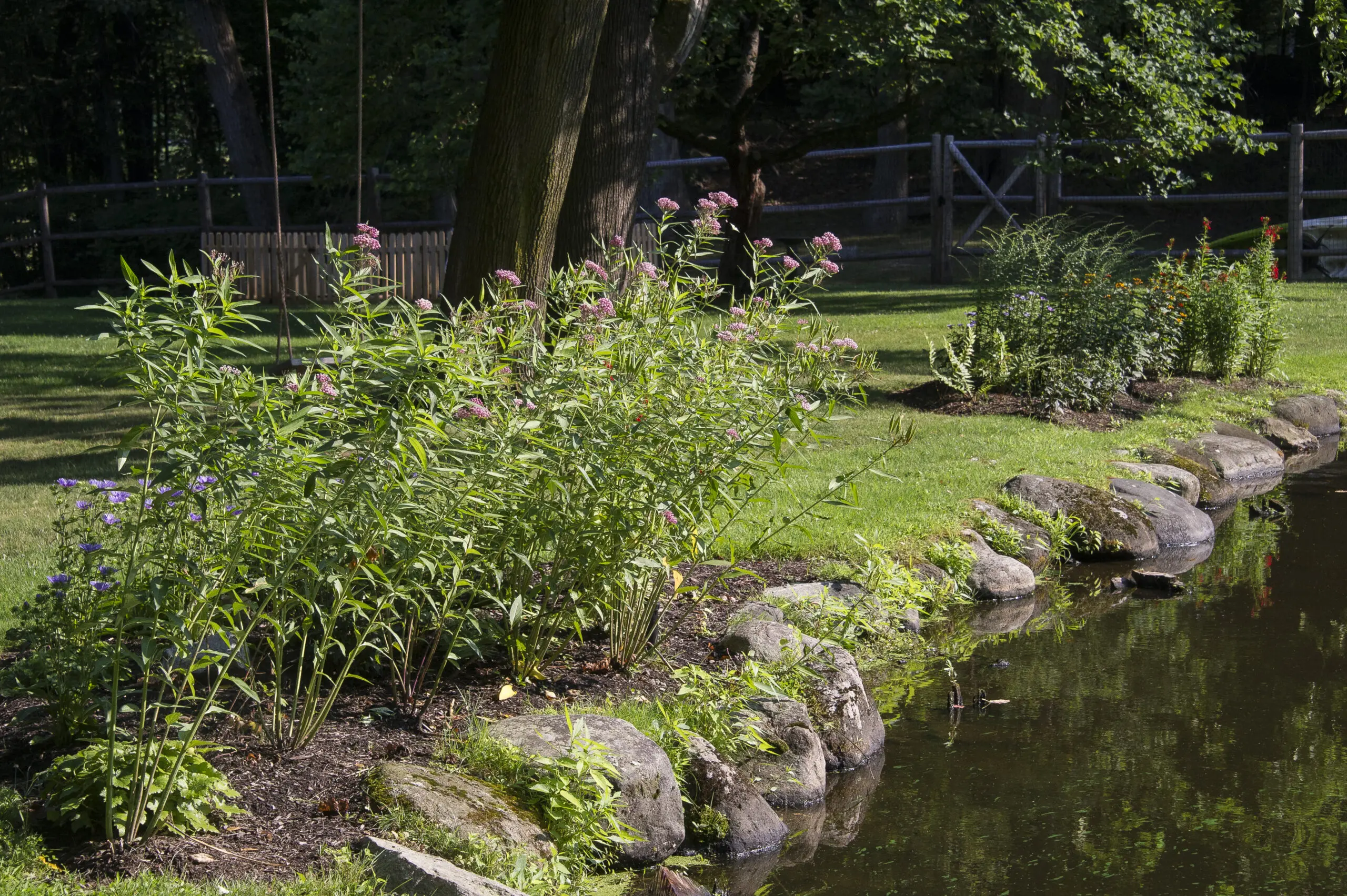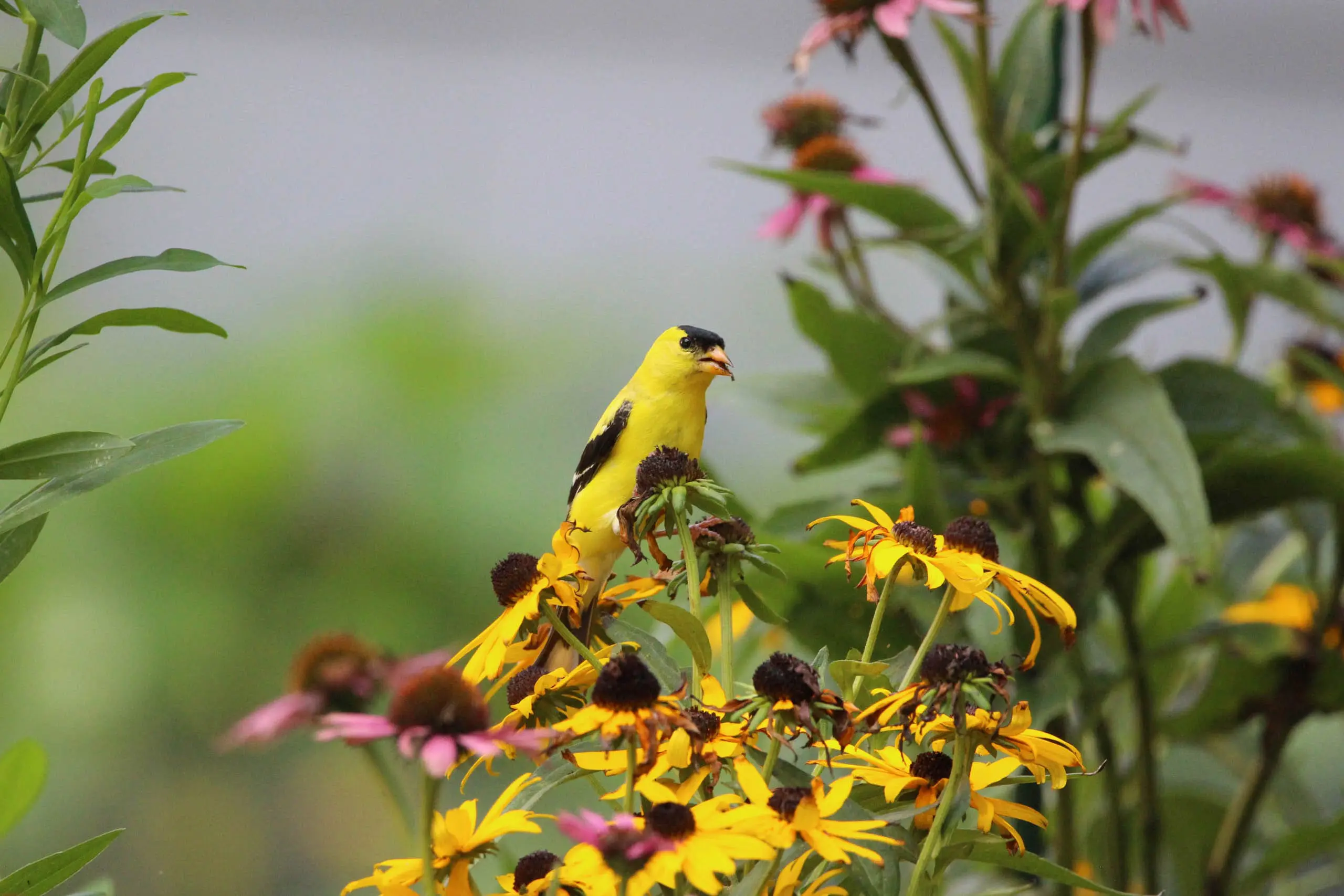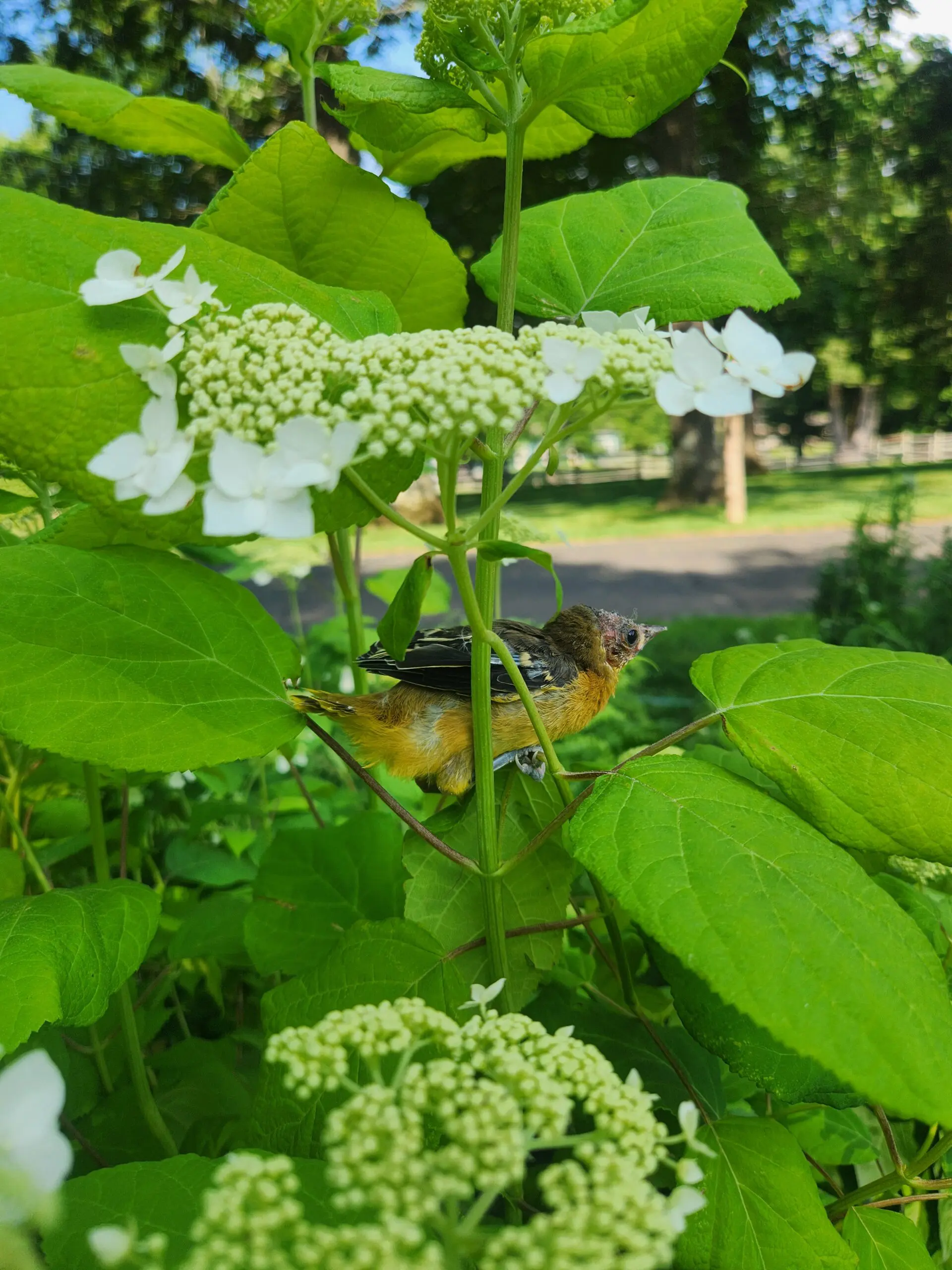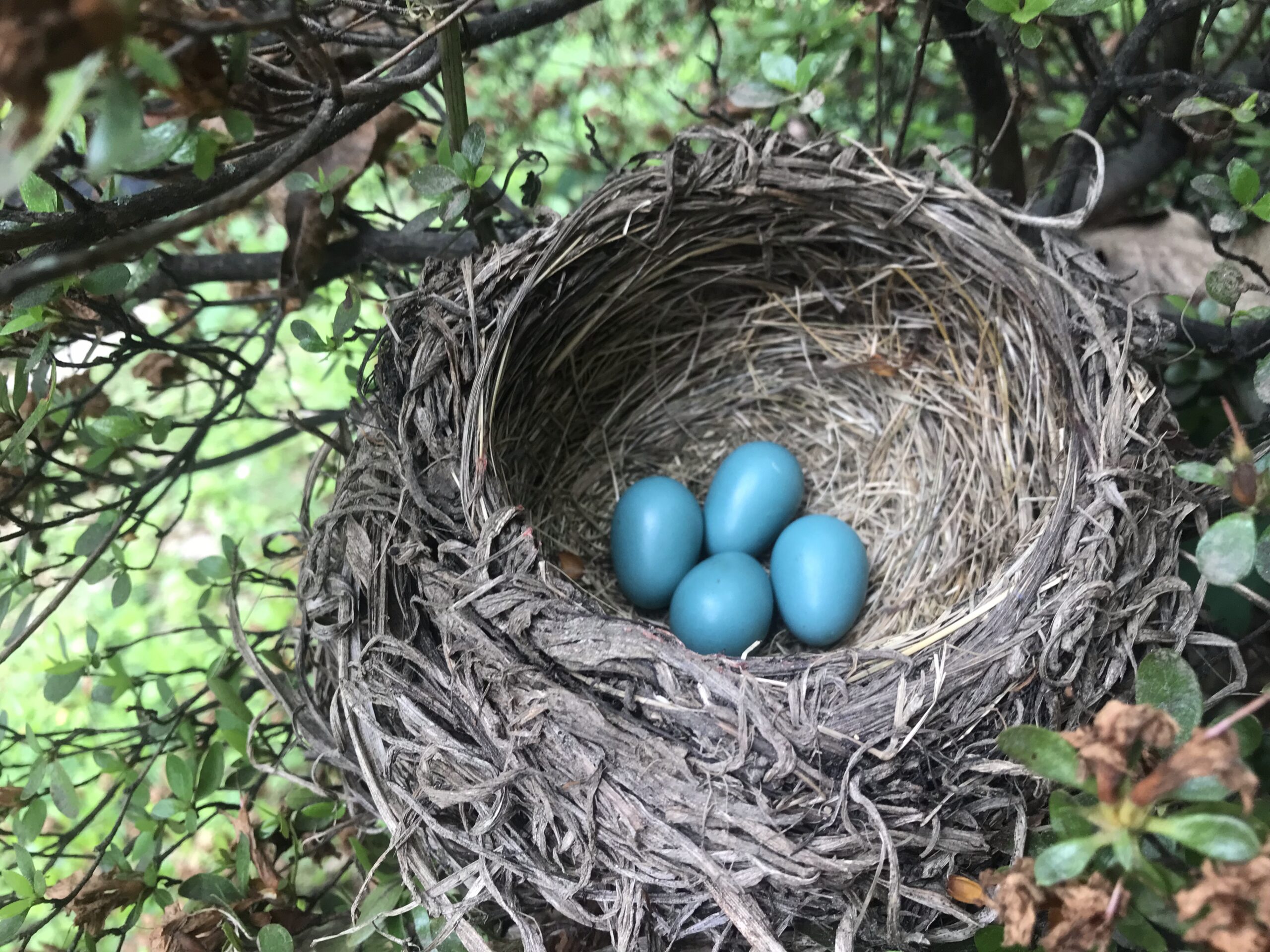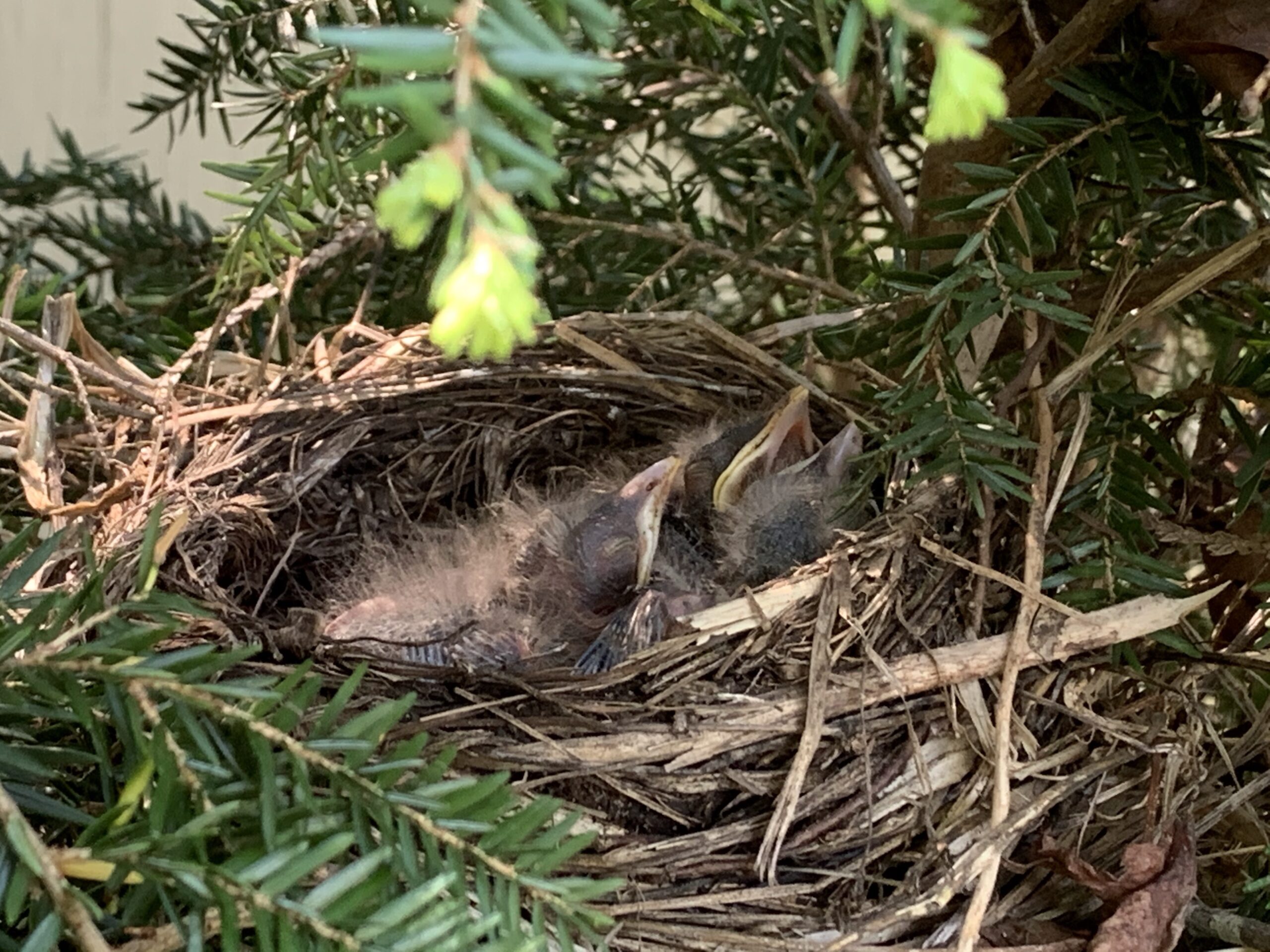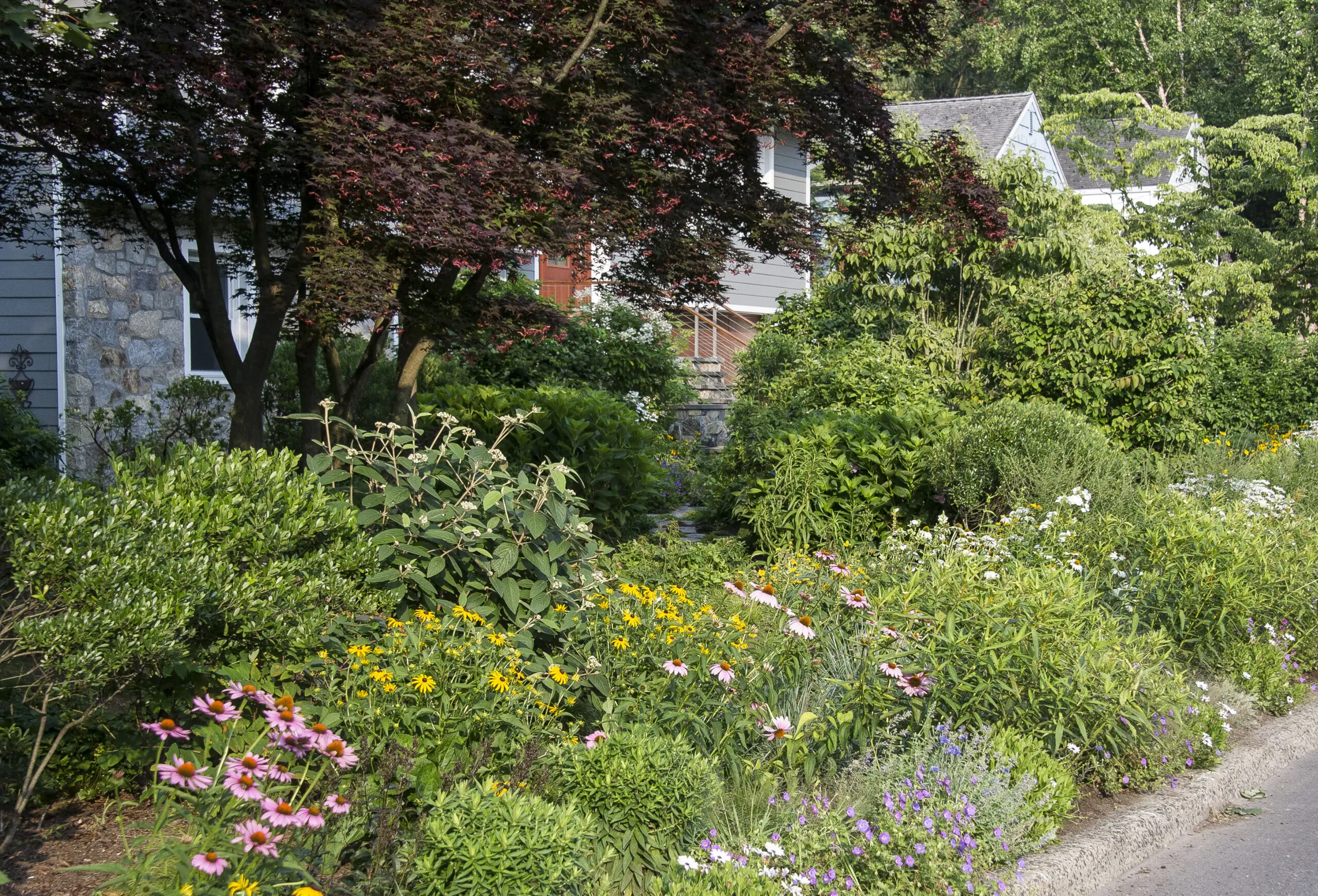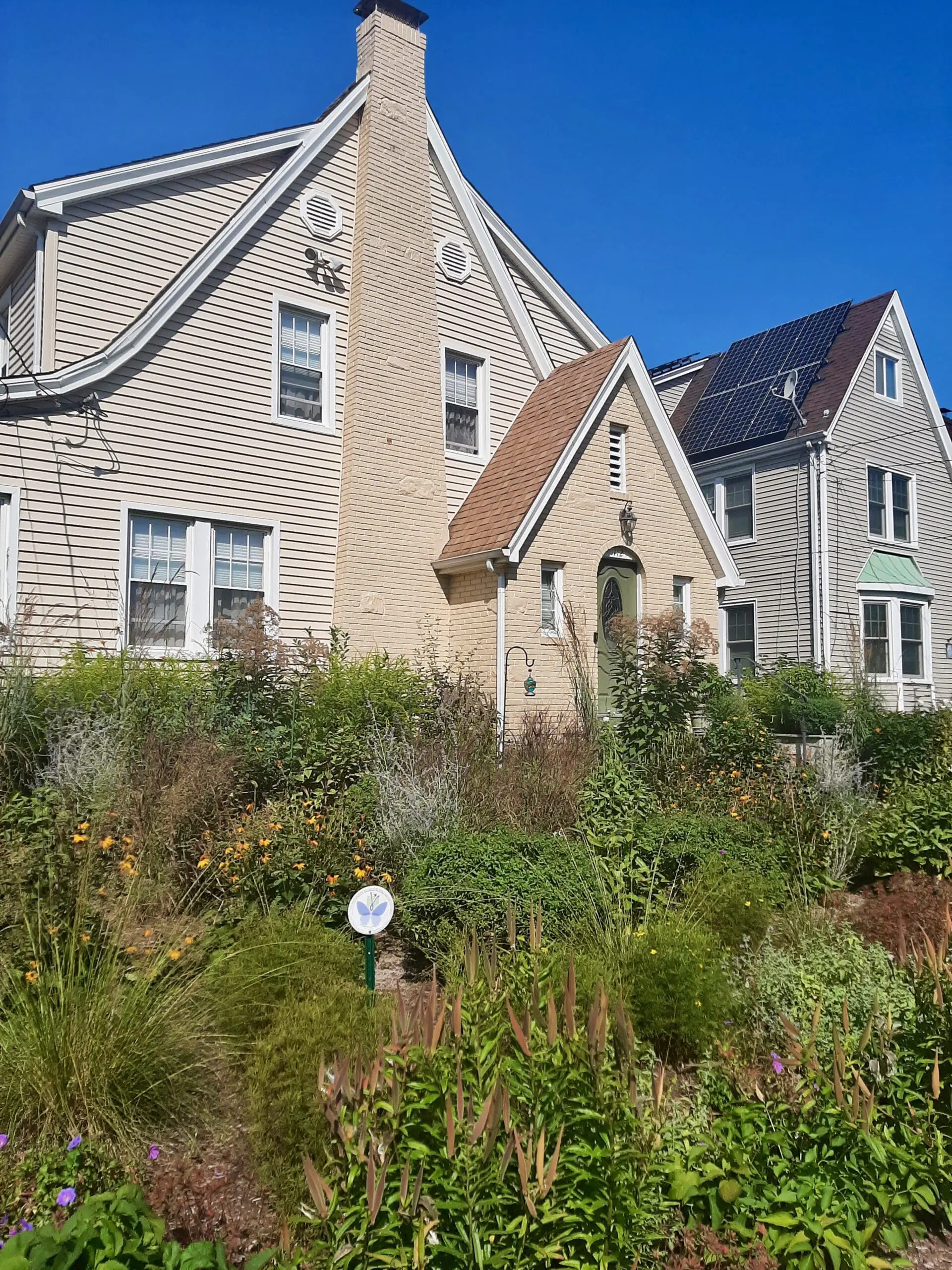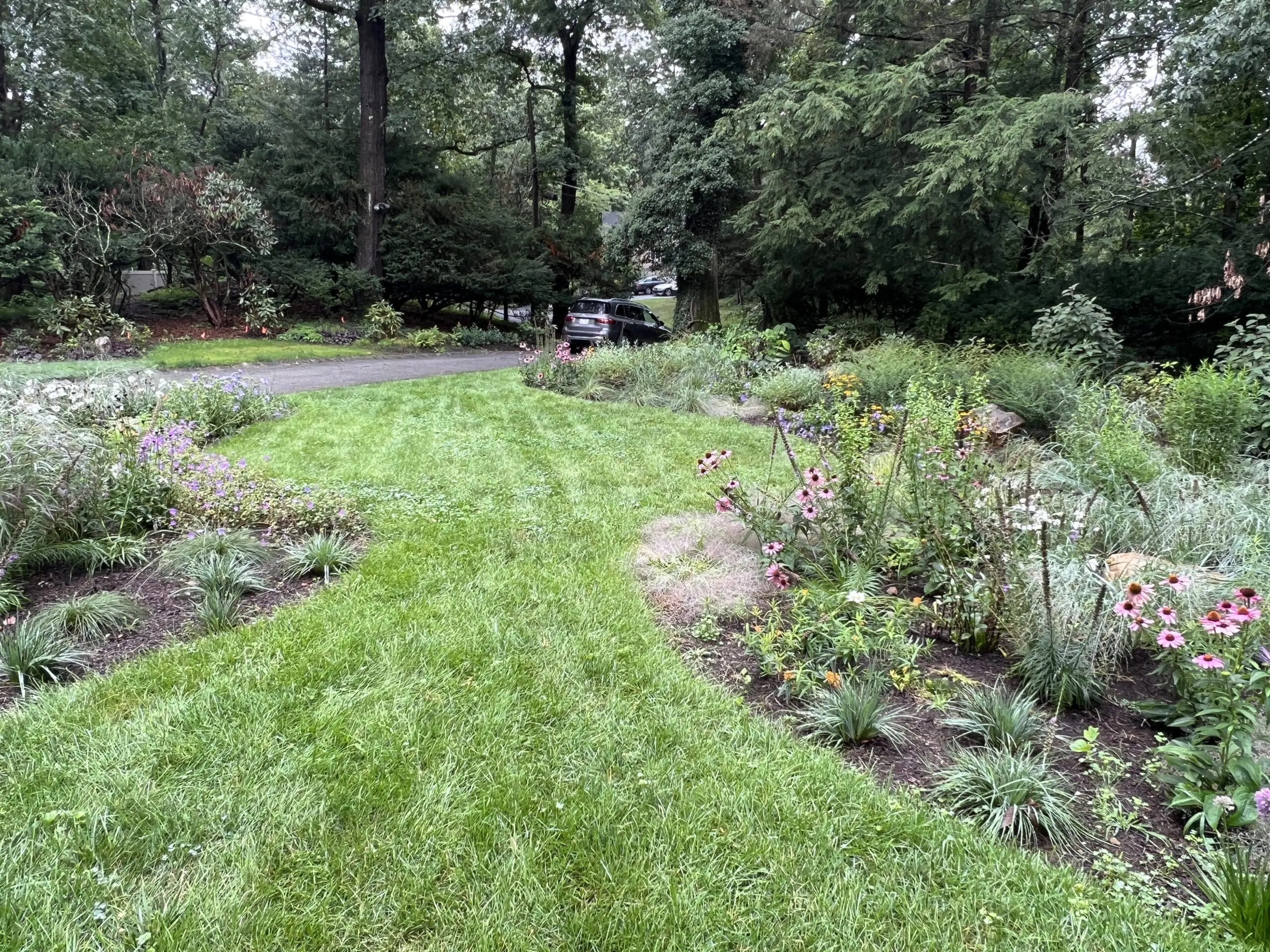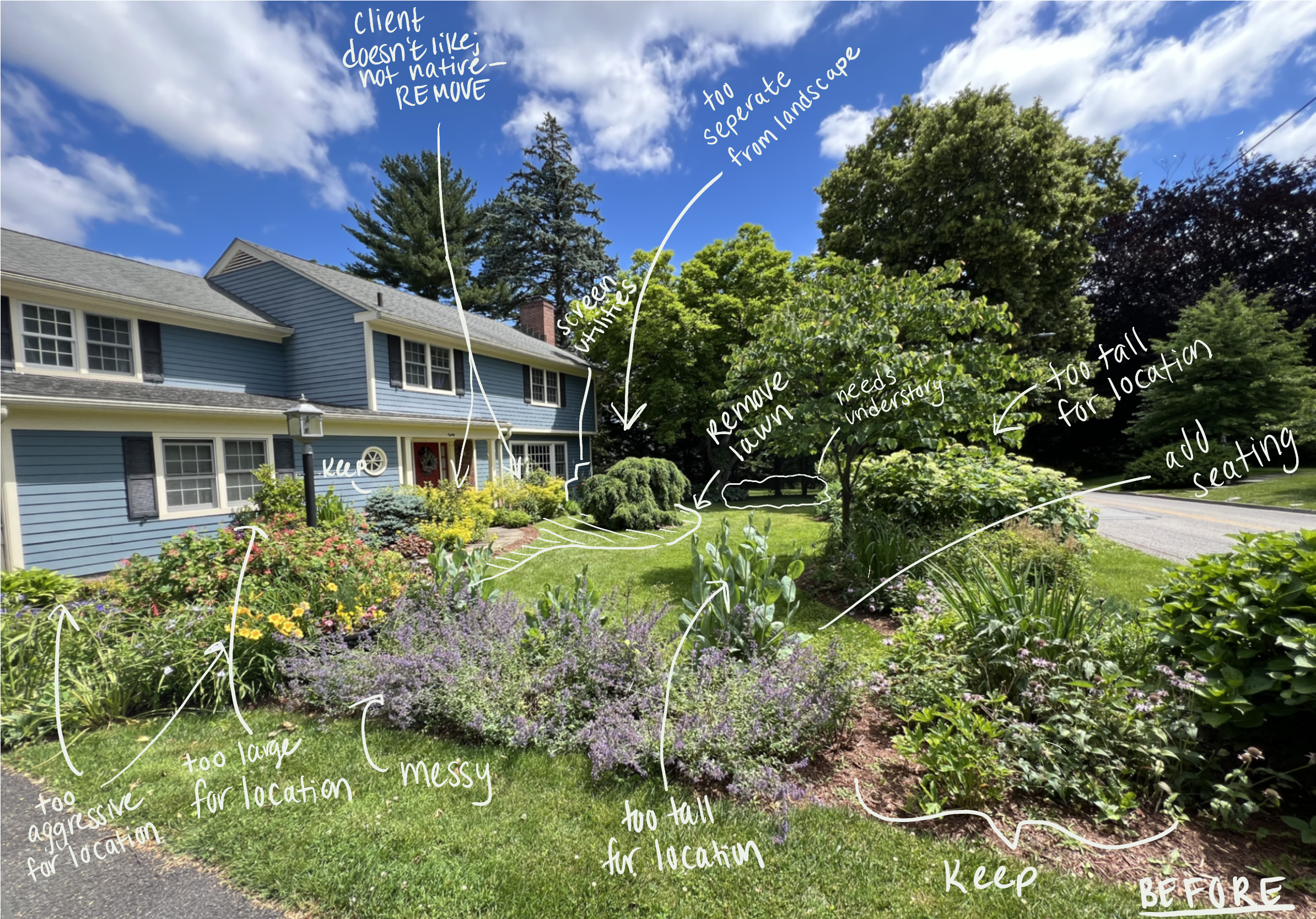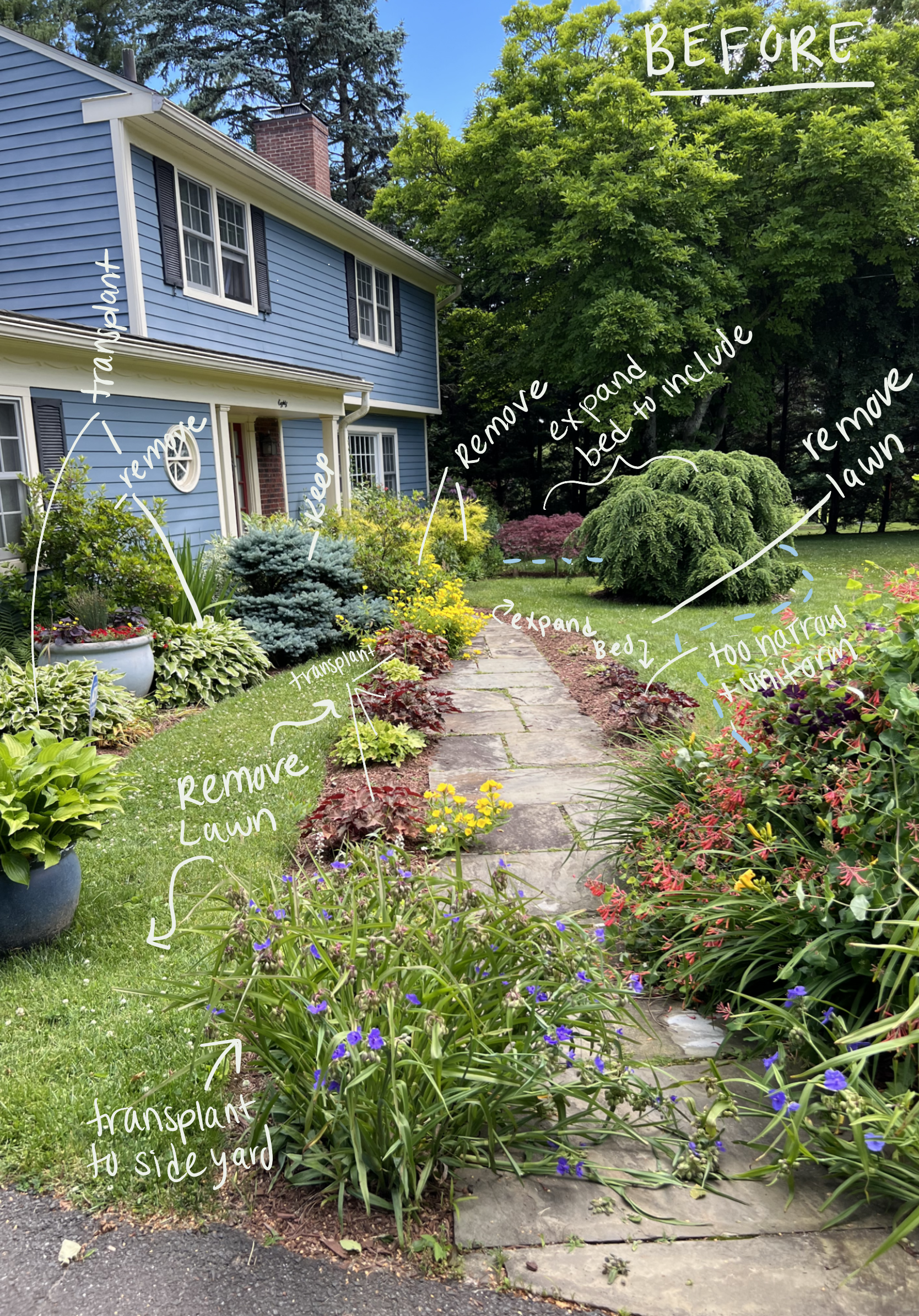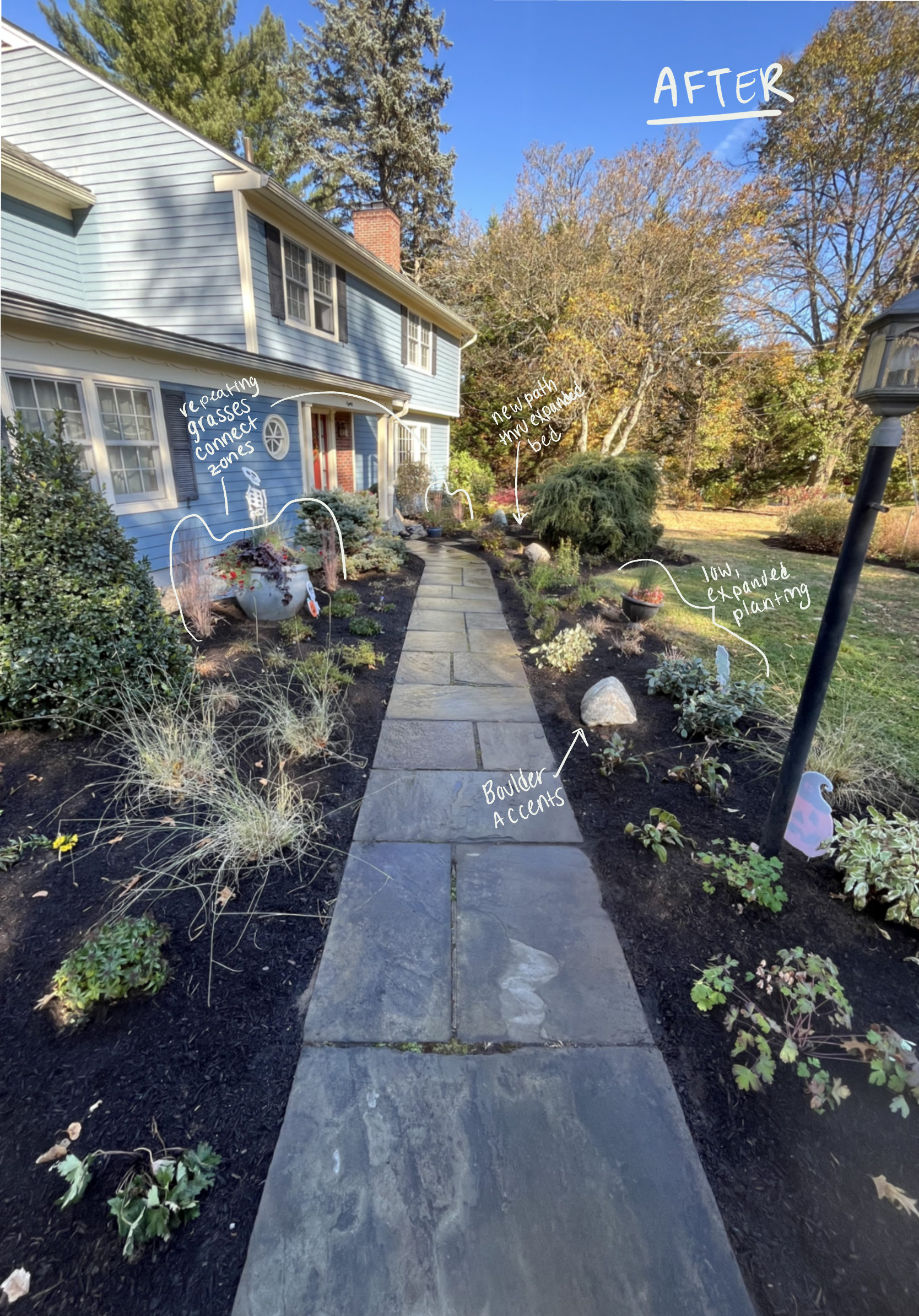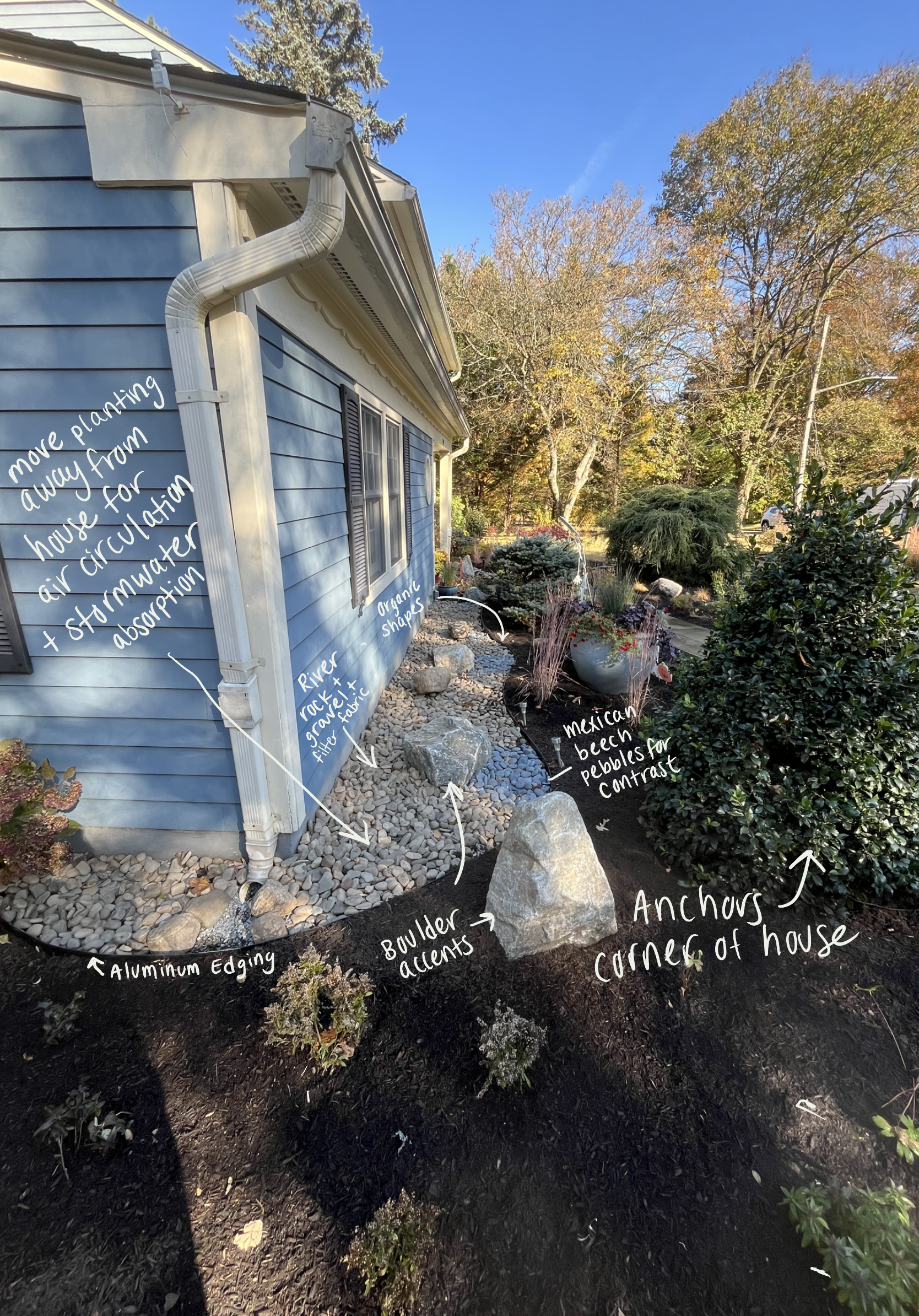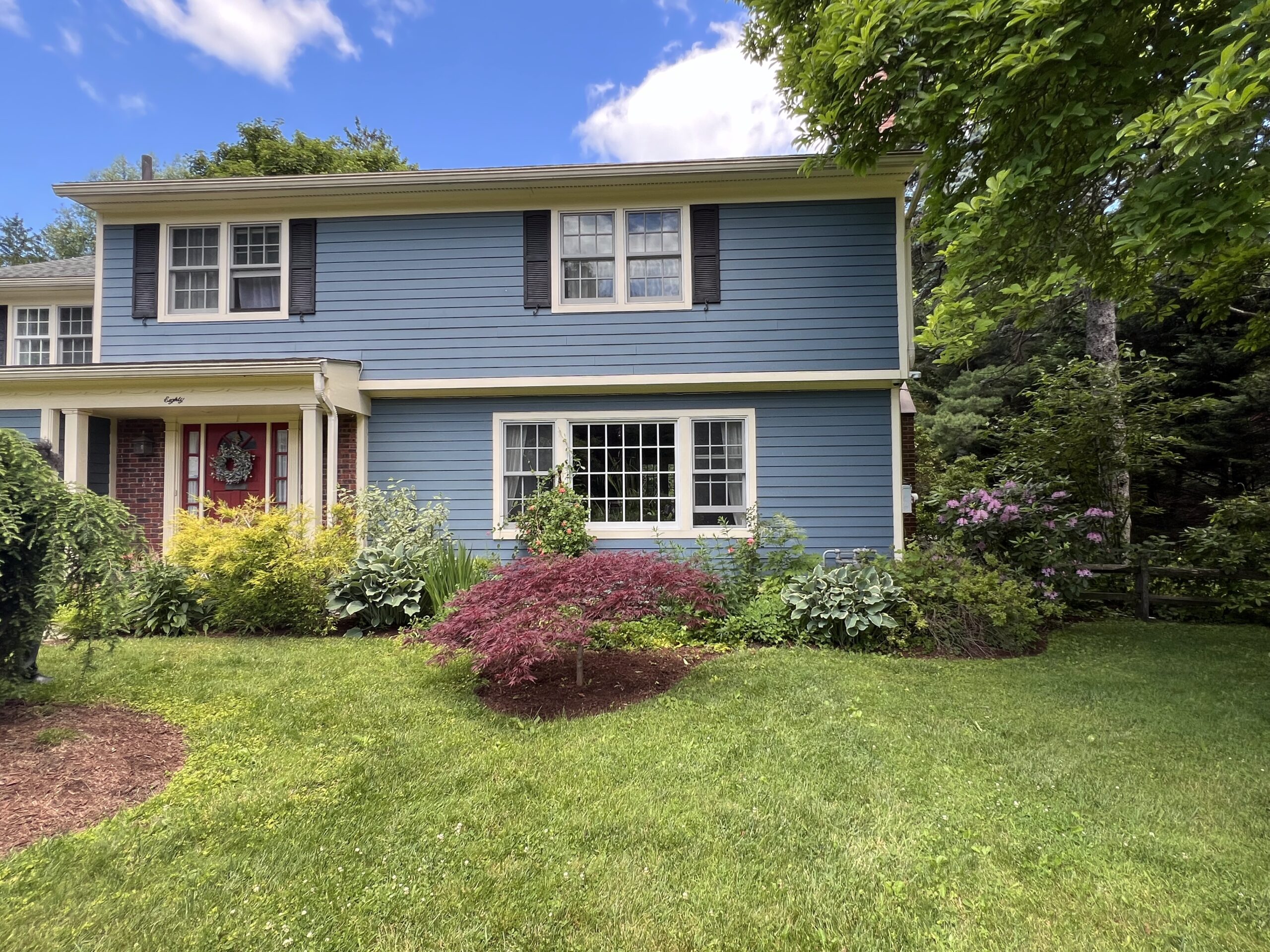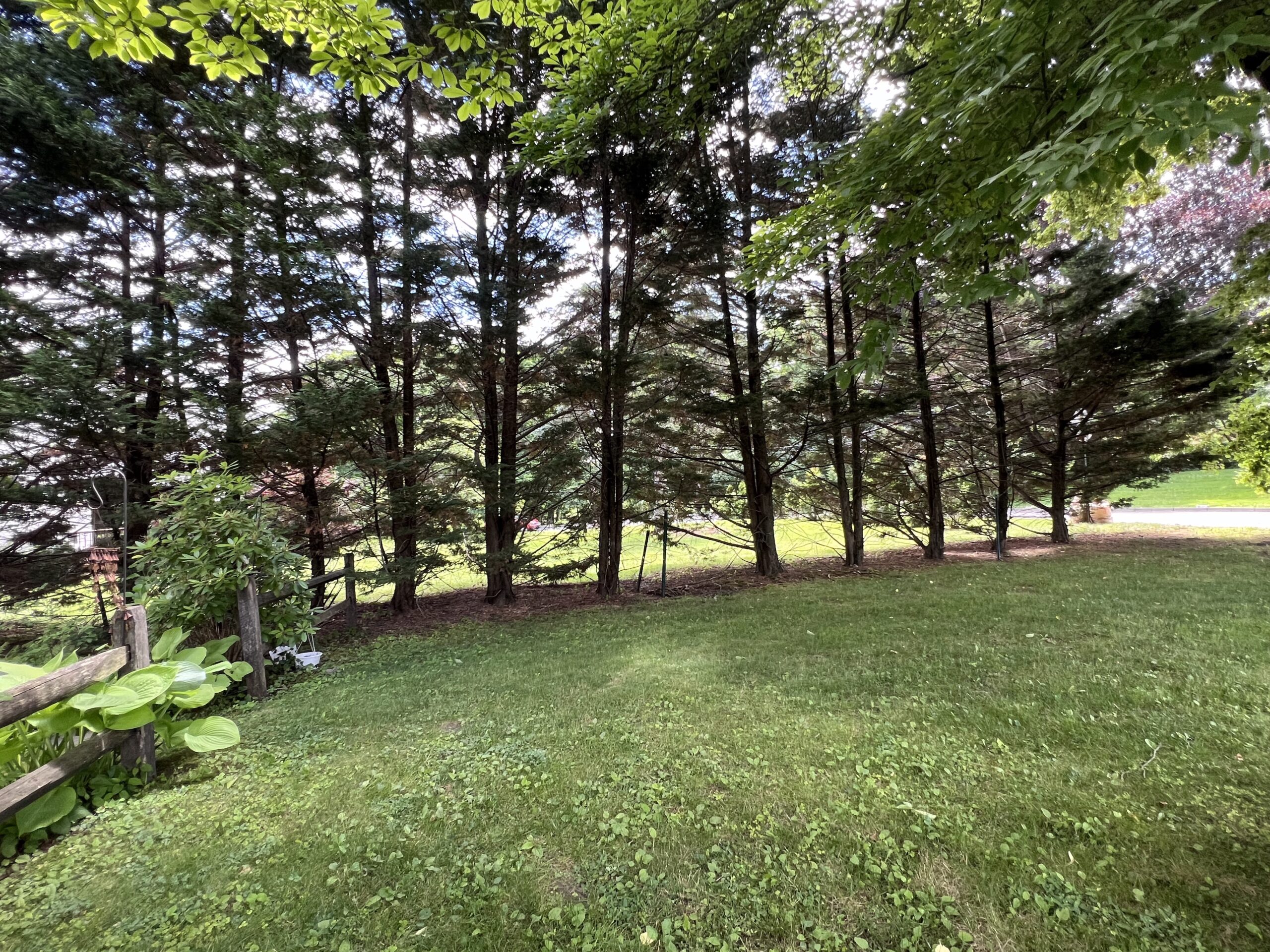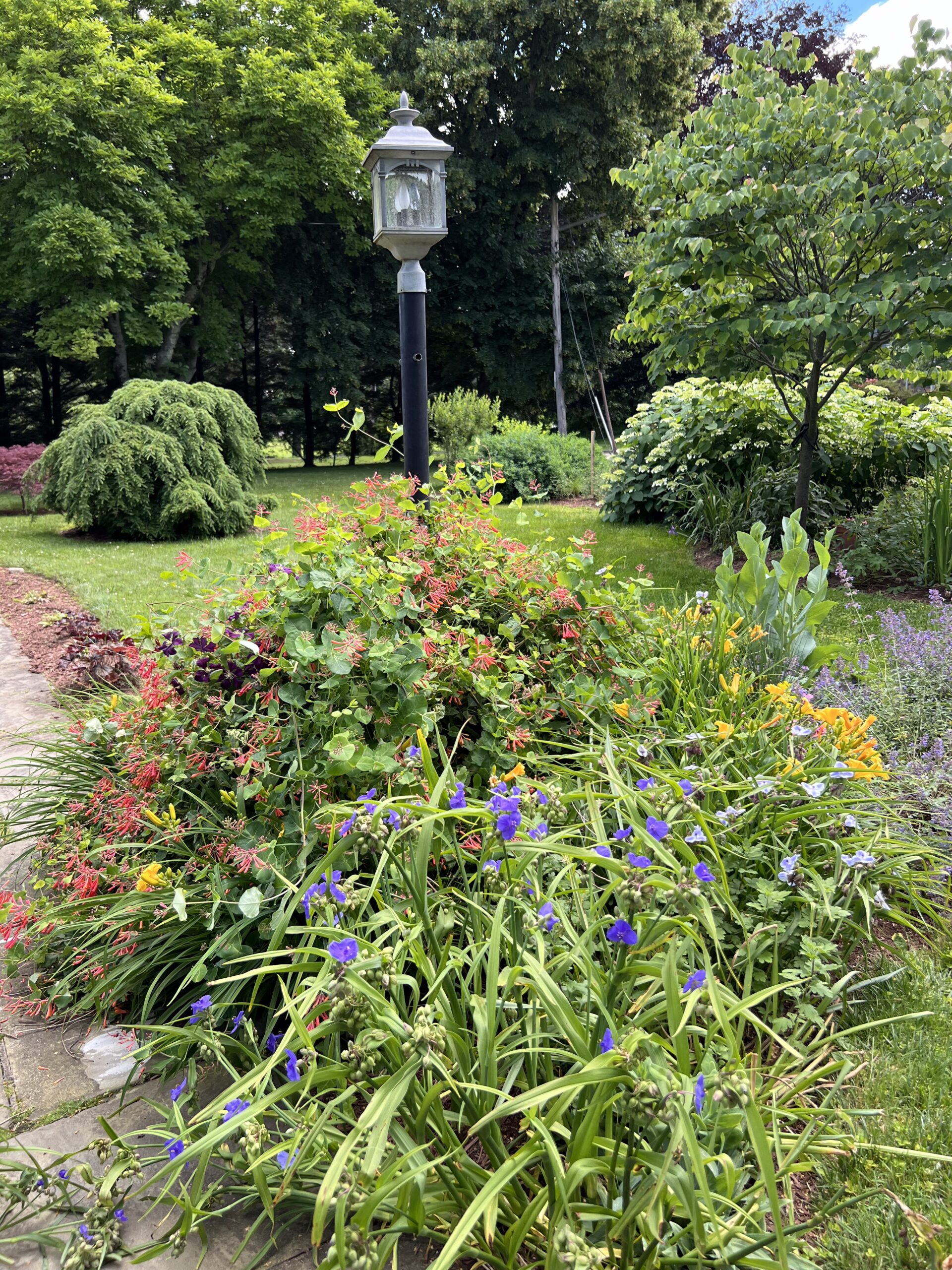On December 4th, Jay Archer spoke at the Ecological Landscape Alliance’s Year-End Conference at Tower Hill. Jay’s presentation, Innovative Stormwater Solutions, Beyond Grading and Drainage covered techniques and case studies employed by Green Jay Landscape Design to manage stormwater and erosion control holistically. Improving landscape drainage depends greatly on infiltration rates, which is directly related to soil quality. Below are a list of resources we use in the field to improve soil structure, nutrients and absorption capacity. The Magic Wand program, also below, details our protocols for improving soil quality in a lawn.

Resource Guide:
Below are some of the products Green Jay Landscape Design uses for to amend soils, stabilize steep slopes and/or enhance the performance of landscape plantings.
- GBS organic fertilizer ( Ocean Organics)
- Plant Magic organic biofertilizer
- Roots M organic fertilizer and rooting agent
- Bioplex biostimulant (for transplanting over 90 degrees)
- Quantum Growth
- Yucca (wetting agent)
- Thermx (wetting Agent)
- Enhanced Gypsum
- Enhanced Calcitic Lime
- Green Sand
- Azomite
- TriForce (Biostimulant/Branch Creek)
- Influencer Biostimulant / Organic Approach
- Feedback Liquid Compost (Mother Earth Organics)
- Worm Power (soil amendment)
- Myco (mycorrhiza innoculator)
- Carbon Pro (Lesco/ Site One)
- Mirimichi Green CarbonizPN with Biochar (soil conditioner)
- Organic Mechanics Biochar Compost Mix
- Curlex erosion netting
- Straw Blanket with Tackifier
- Jute Netting
- Coir Fiber logs
- Filtrexx Soxx (wood chip filled erosion device)
- Sand Aid (granular sea plant meal – Lebanon Turf)

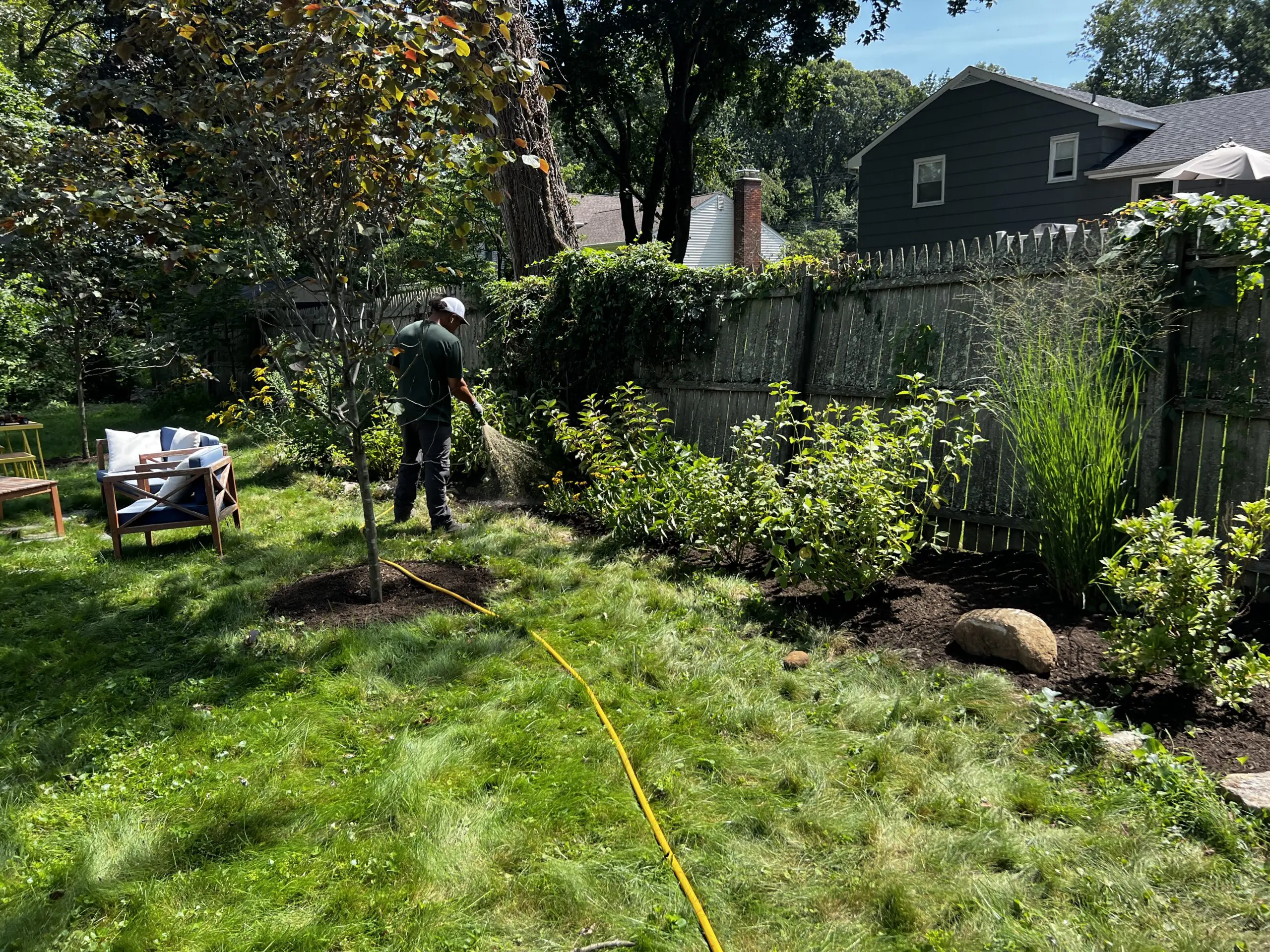
Magic Wand Formula:
The primary purpose and objective of the magic wand treatment is to improve
existing soil conditions utilizing a unique rehabilitation/treatment method. This increases water infiltration and absorption, in turn, producing the healthiest possible landscape environment. The goal is to achieve the highest possible result with the most cost-effective solutions available.
The advantage of the Magic Wand system is to provide the least intrusive approach compared to conventional construction methods (for example pipes, storm drains, catch basins etc.).
The magic wand treatment is essential to restoring proper drainage to a compacted site. Construction is one of the leading causes contributing to a compacted condition, leading to poor turf performance and landscape failure. Remediation of these conditions can be challenging and involve several applications to correct. The components of the formula are determined based on the results of the soil laboratory analysis.
The ingredients are as follows:
- The Process begins with a site analysis/bio-assay/soil test.
- Enhanced Gypsum (CaSO4). Is a natural product that is enhanced with soluble humates. These humates release nutrients that are being held onto by the soil. The gypsum will break up heavy clay soils and alleviate high salt levels. (Particularly from heavy ammonia fertilizers and road salt from winter.)
- Calcified Lime. This natural product is used to adjust soil PH according to soil tests.
- Permatill Shale (calcified clay). This creates a more suitable environment for plants to grow by increasing air concentration in the root zone.
- Phosphate Rock/Green Sand (mineralization) adds micronutrients/minerals to feed the biology growing in the soil. These living organisms return organic nutrients necessary for healthy plant growth.
- Soil Surfactant (wetting agent). Boosts the cation exchange capacity of soil and helps distribute water evenly throughout the soil. It may also allow water to move through hydrophobic soils.
- Compost/Top Dressing adds high organic matter as well as large numbers of active biological agents.
- Bio-Stimulants adds high concentrations of a variety of soil organisms. Soil conditions help to determine which organisms will flourish and which will decline.
- Mechanical Aeration incorporates all of these materials into the soil allowing for optimum plant growth. Air concentrations are increased in the root zone and water is allowed to properly drain.
In addition, for best effects/results, we recommend an intensive seeding regime be followed.
Need help with your organic landscape or stormwater management? Contact us to get started!
